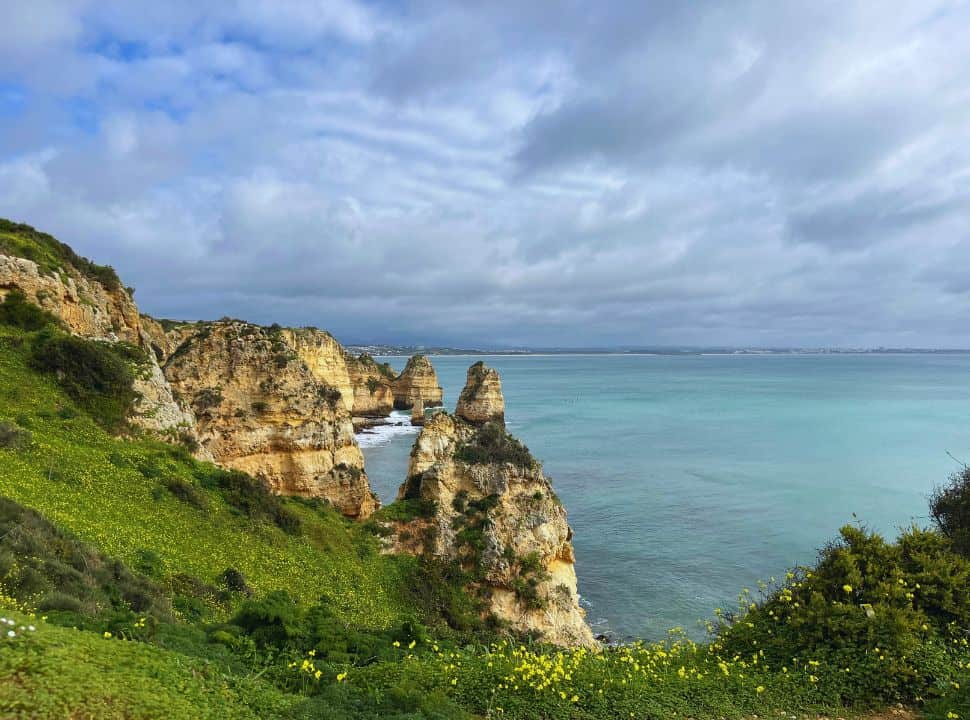Algarve in Winter. Discover why you should go in 2025
Exploring the Algarve in winter, everything you need to know to experience it to the fullest…
Halfway through winter, we craved Vitamin D and the warm feeling of sunshine on our faces. So when we discovered that the Algarve in southern Portugal has the most sunny days per year in Europe, we didn’t have to think twice.
Before we knew it we were on our way to Faro, the capital city of the Algarve.
The Algarve in winter provides the perfect getaway. The temperatures drop to an average of 10°C to 16°C and there is occasional rain. But the bright sun ensures pleasant winter weather, ideal for outdoor activities.
If you are thinking of heading to the Algarve during the European winter months, continue reading to discover what you can expect and all the things you can do.
Weather in Algarve in Winter
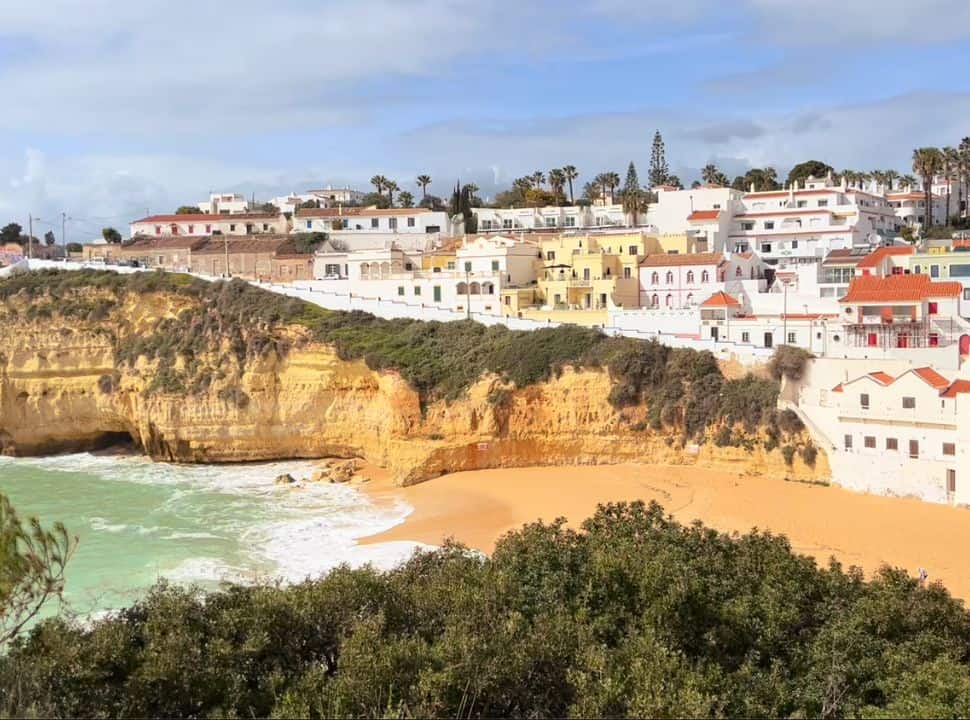
The winter months in Europe are from December to February. Compared to other parts of Europe, the winter in Algarve brings welcoming temperatures. Average temperature ranges from 10°C to 16°C with an average of 6 hours of daylight daily.
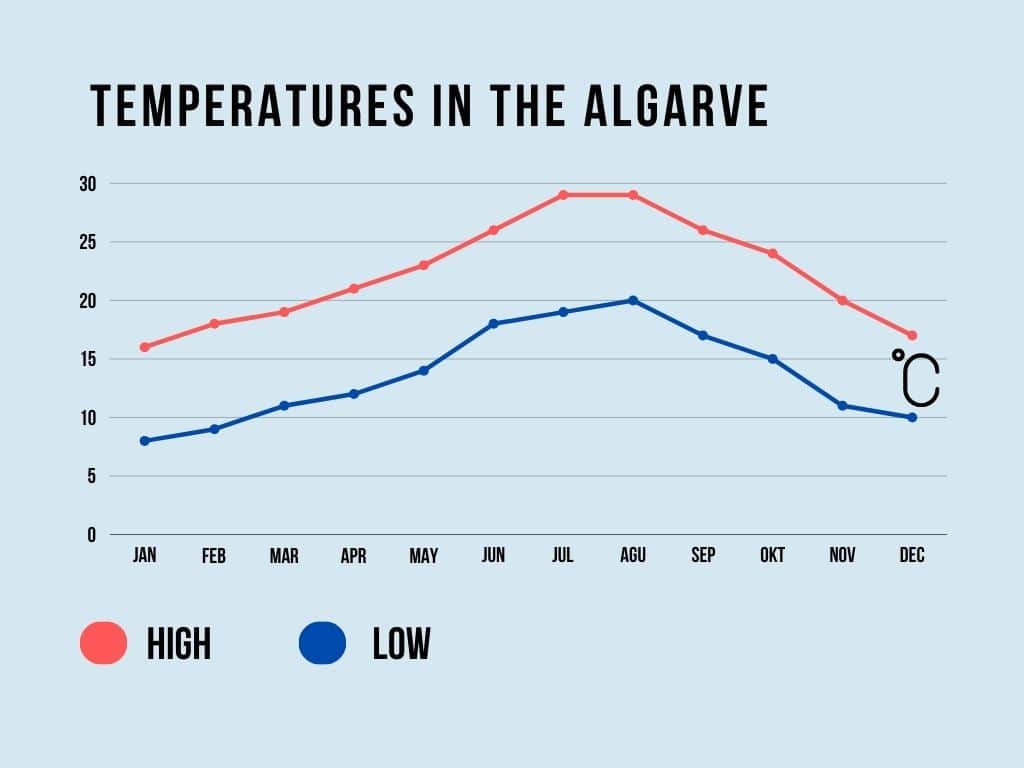
For some, this might seem cold. It will however feel much warmer when the winter sun is out and the wind is calm.
So does it rain in the Algarve in winter?
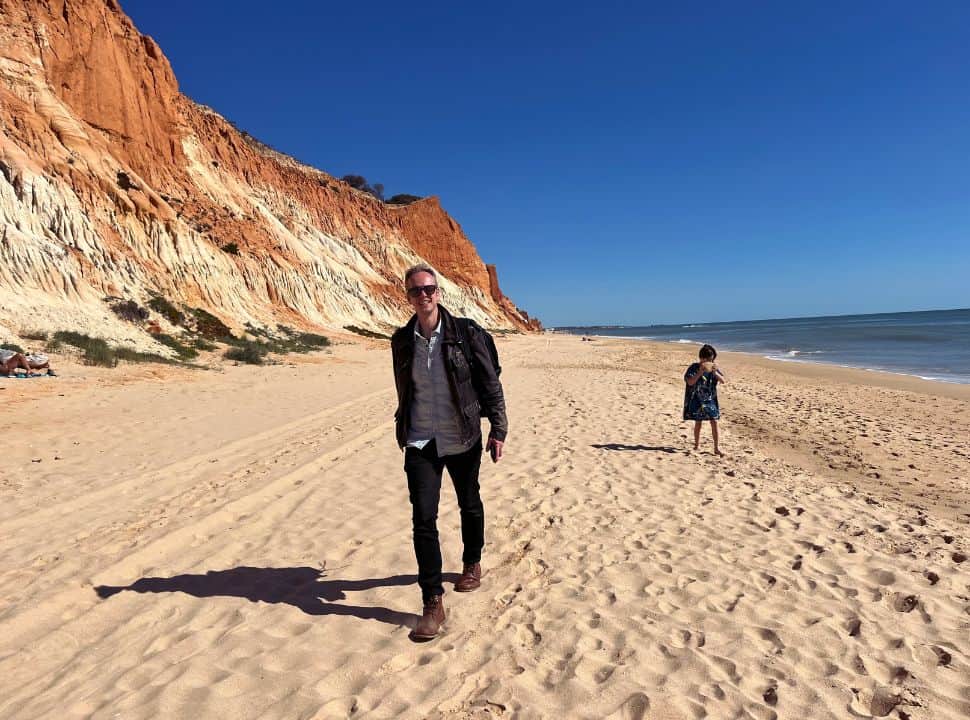
The winter months in the Algarve have the most rainfall. However, it will not rain the whole day.
On average it rains 12 days in December with a maximum of 117 mm rainfall. In January this is only 9 days with a maximum rainfall of 85mm, and 5 days in February with a maximum of 25mm rainfall. (source: holiday-weather.com)
We recommend to pack a light raincoat. Not only is it perfect for rainy days, but it will also keep you warm on windy days. The windiest period in the Algarve is between October and April, with December being the strongest.
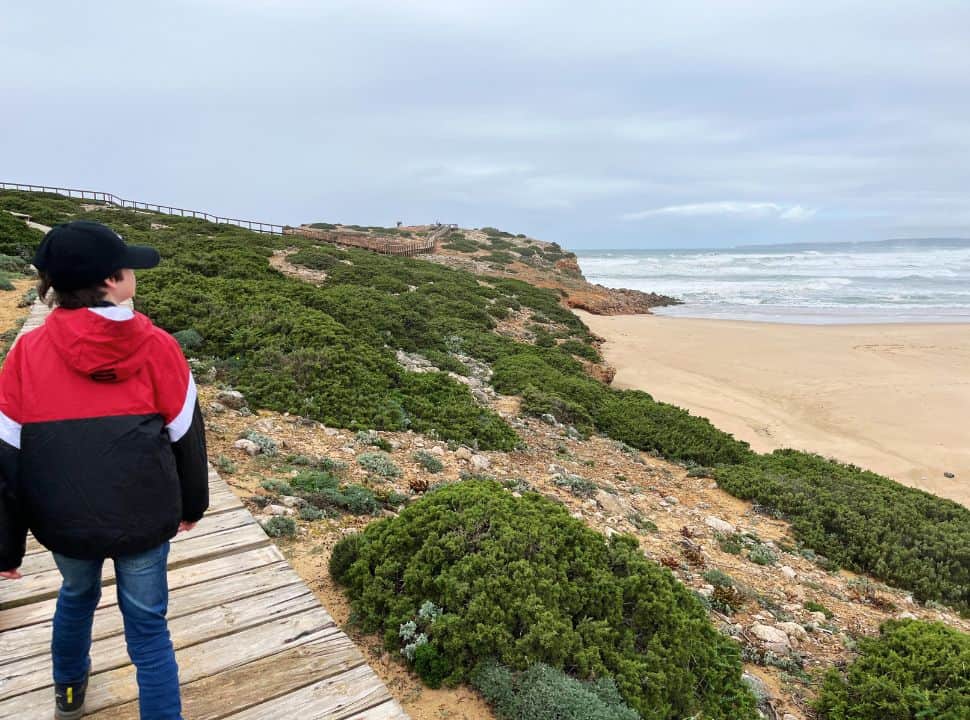
When we were in the Algarve in February there were a couple of days with occasional rain showers. But towards the end of our trip, the sun was out and we had beautiful blue skies.
It was about 17°C degrees during the day but temperatures felt much warmer when sitting in the sun. We even went out for a swim.
The water temperatures in the Algarve during the winter months are around 15 °C. It is nice to hit the water if you are used to swimming in cold water.
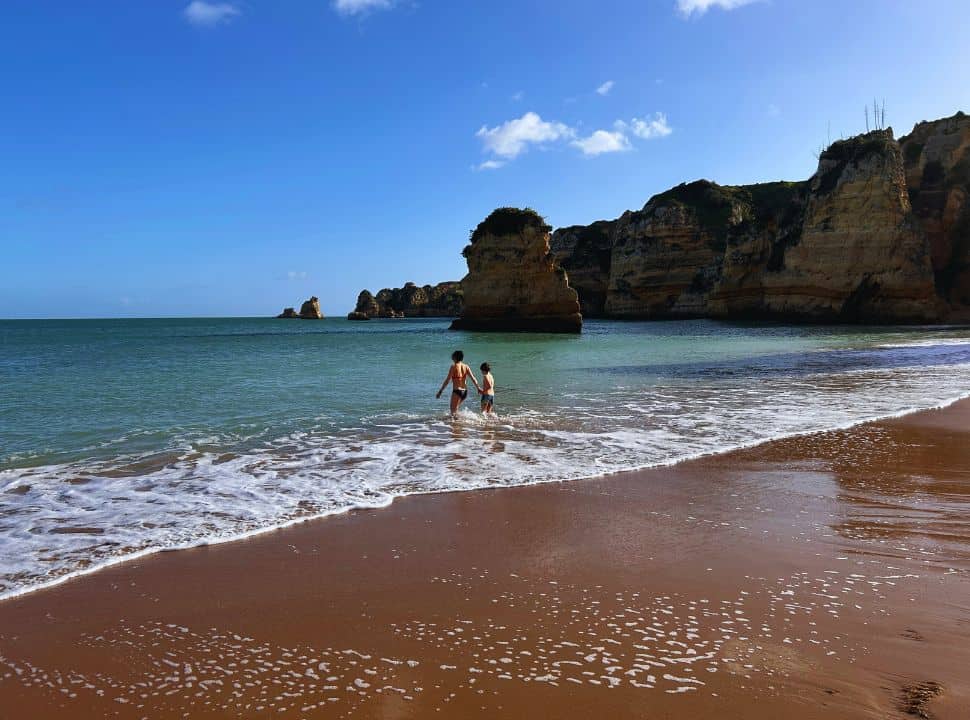
We did check the forecast before and after we left. For both those weeks they expected clear skies and temperatures reaching 22°C.
So as you can tell, it can change day by day.
In A Hurry? Pin It For Later
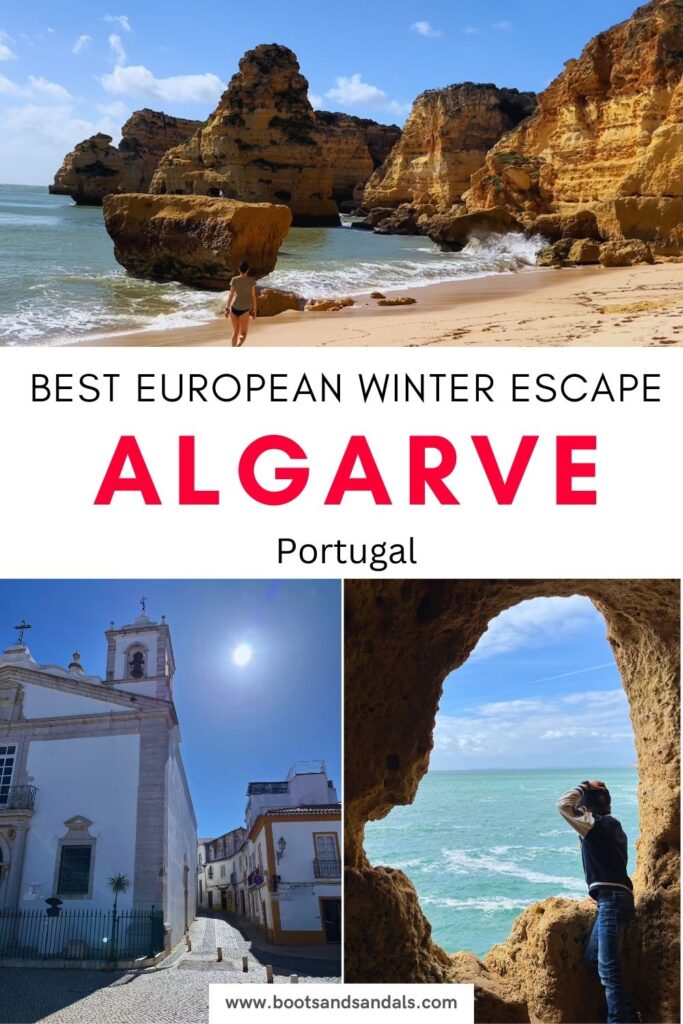
Pros and cons of visiting the Algarve in Winter
We have only experienced the Algarve in the winter. However, we have been to the southern tip of Spain many times during the summer. So we can imagine how things are in the Algarve during the summer months.
Each season has its pros and cons. But when we were in the Algarve, we realized how lucky we were to experience it in the winter.
Winter Season Pros
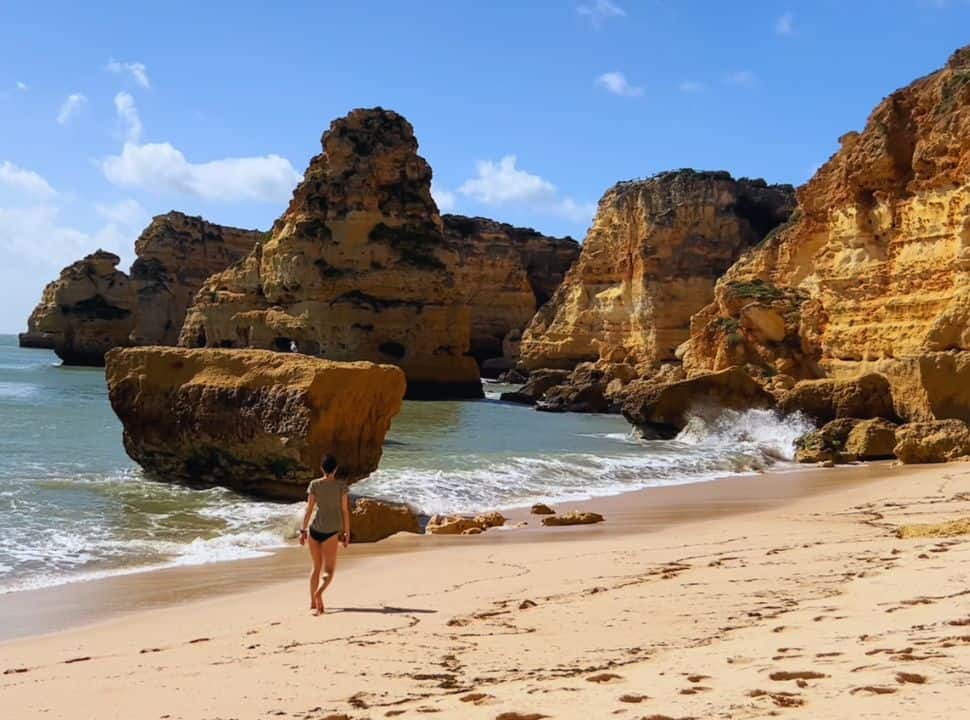
Mild Temperature
The mild winter temperatures make the Algarve a pleasant destination for hiking and visiting towns. You will not feel like you are sweating away in the sizzling sun. It is also an excellent opportunity to do a road trip. Check out our Algarve 3-day itinerary for ideas.
No Crowds
During the colder months, you can easily be the only one at a beach, or hiking along one of the many trails. Finding a parking spot is also very easy, just as driving to the area highlights.
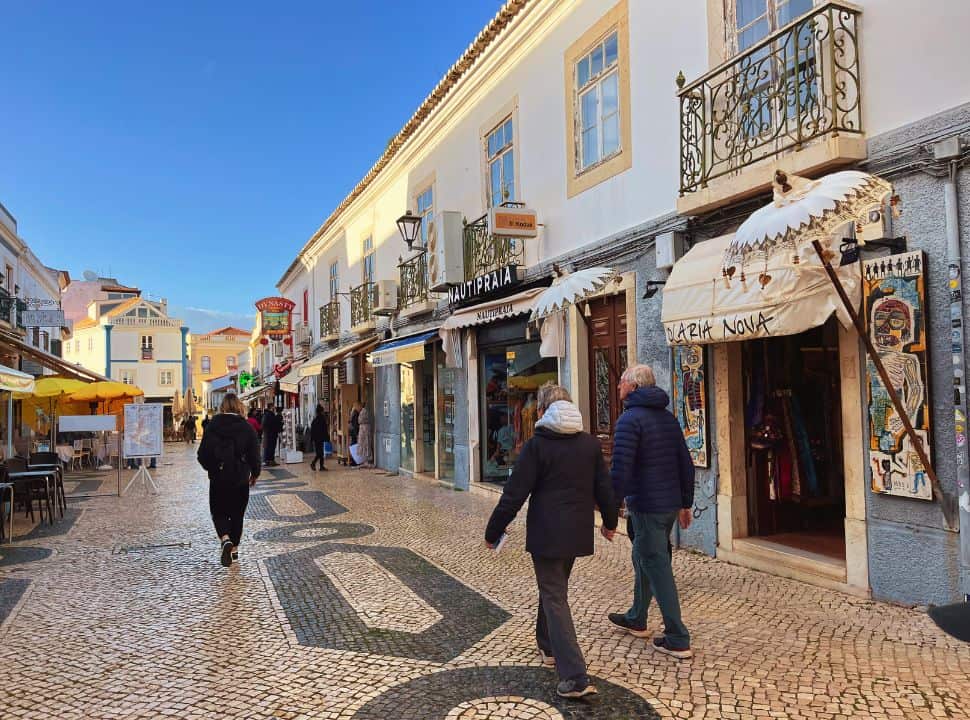
Queuing is non-existent, such as waiting for a table at a restaurant. A table is always available.
We also enjoyed strolling through the quiet narrow streets like Lagos and Silves. There was a calm and relaxing atmosphere everywhere we visited. In the summer this would have been a whole different experience.
Low-Season Prices
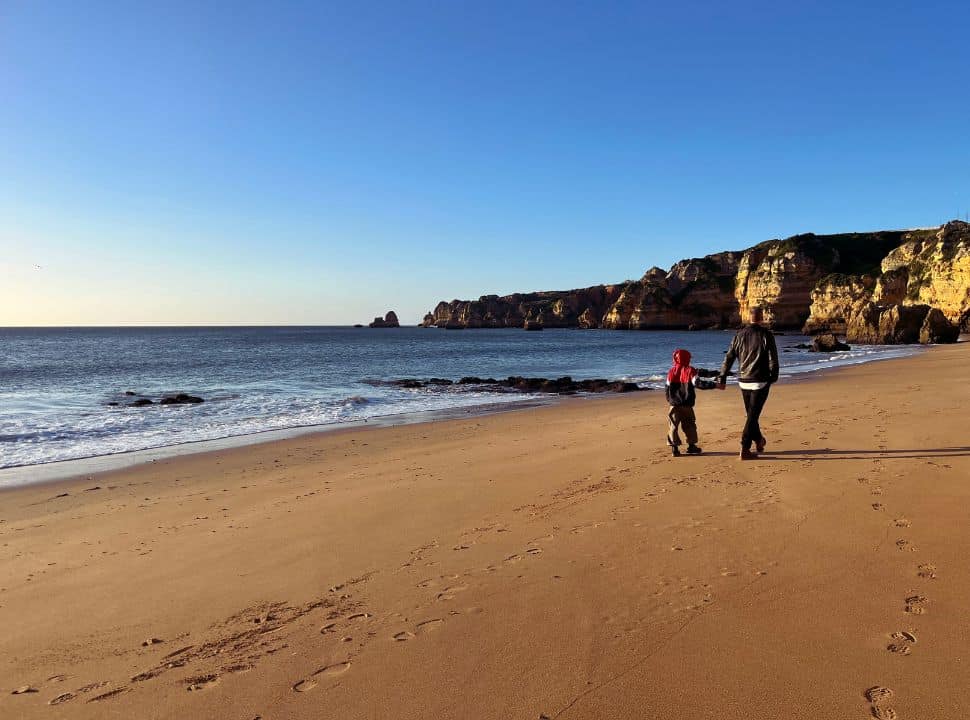
The Algarve coast is one of the most expensive parts of Portugal. Renting cars and going on guided tours are far cheaper in the winter, accommodation not so.
However, the accommodations are ofcourse much cheaper than in the high season. We decided to go for something different and ended up at a big hotel with breakfast included at Piaggia Da Ana, one of the most popular beaches.
We usually avoid hotels like this because it can get busy during the peak season. But now we knew it would be quiet and the price was pretty good. We loved the sea view and the easy access to the beaches.
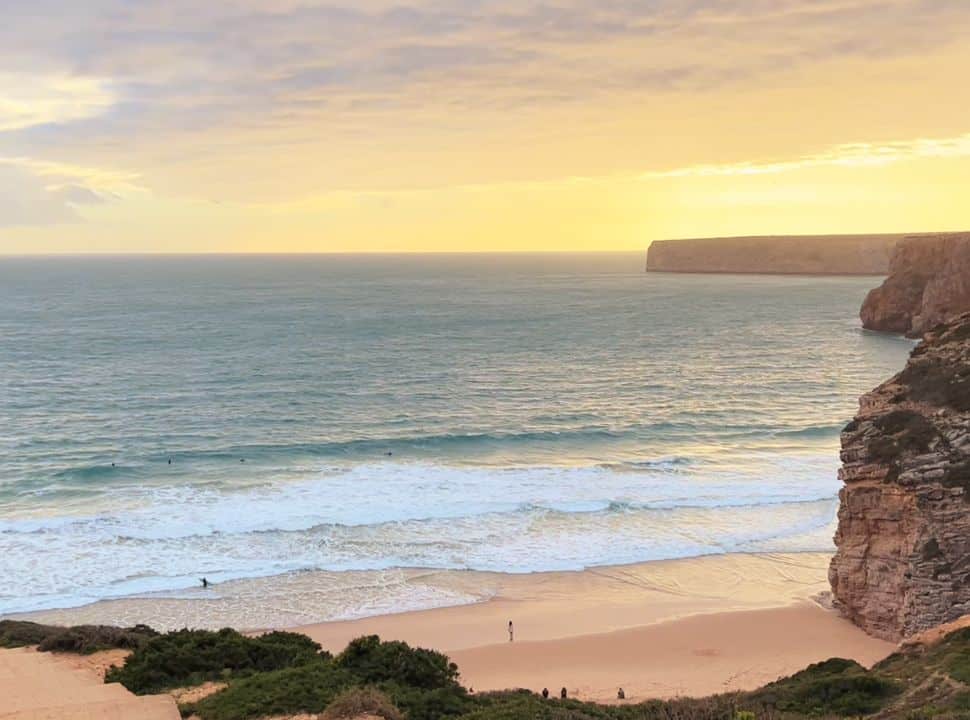
Surfing Season
Portugal is the surfing spot in Europe. The best time to surf in the Algarve is from November to April. Surfers flock to the southern beaches between Sagres and Lagos or Portimao.
We saw many camper vans at the beaches on the west coast and near Sagres. Surfers would gather together at one of the many beaches at a certain time of day. It looked like fun and a wonderful experience if you are into surfing.
Wild Flowers
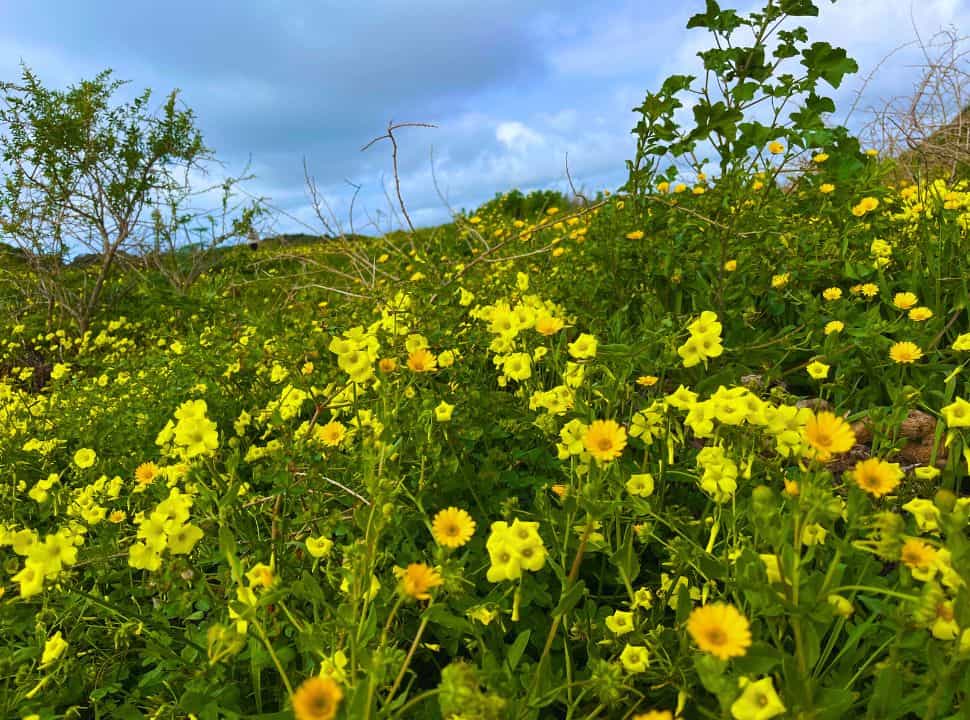
The best time to see the flowers in full bloom is in spring, from March to May. However, in February we saw fields and cliffs covered with wildflowers too.
Birds were also busy doing their business till late in the afternoon. During the 7 Hanging Valley hike we heard many birds chirping between the bushes.
Winter Season Cons
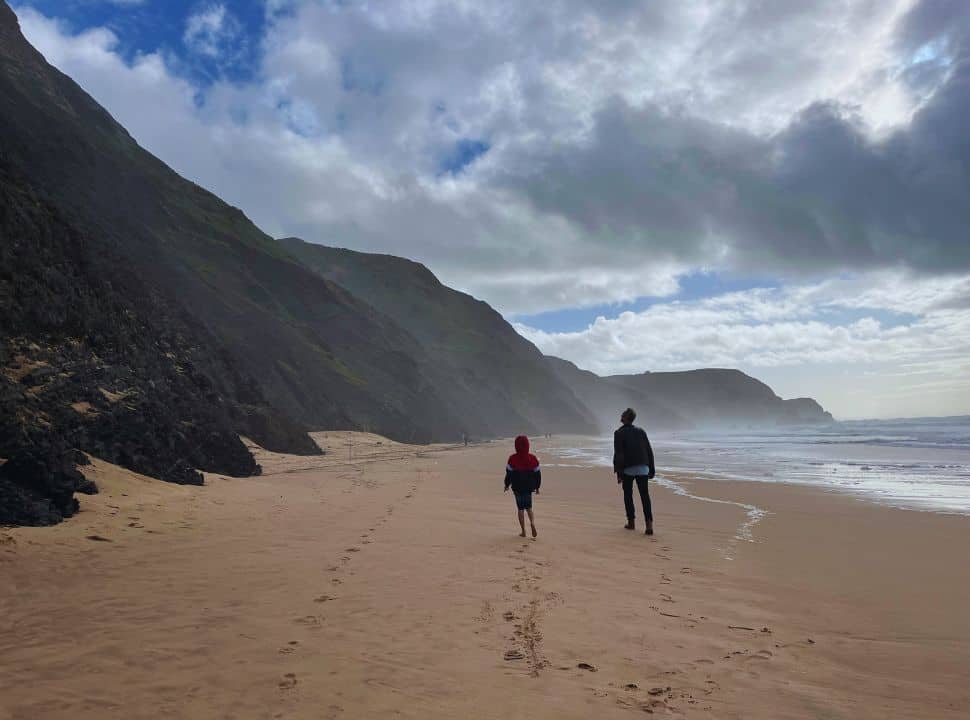
Wind and Rain
Obviously, the biggest downside of visiting the Algarve in the winter is that the temperatures are much lower than in the summer. Additionally, a steady wind makes it feel slightly colder too.
You can also expect the most rain during the winter months. Luckily it doesn’t rain the entire day. At one point we were at a beach on the West Coast where we had little rain, clouds, and a bright blue sky all in one visit.
Less Choice in Accommodation
Initially, we also searched for accommodation in Carvoeiro or Benagil Beach. But during the low season, many accommodations are closed in little coastal towns.
Those that were available were pretty expensive.
Eventually, we decided to stay in Lagos our entire stay. Cities and larger towns have more accommodation available.
A lot is closed
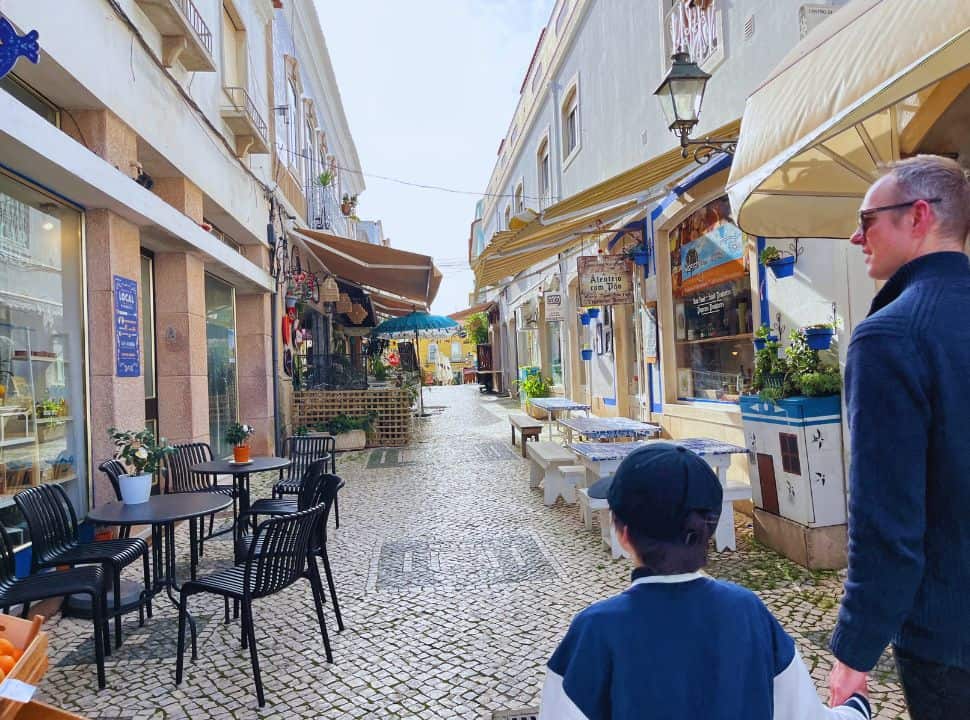
We visited a couple of little villages, and all of them were deserted. Shops and restaurants were closed.
We experienced the same when traveling in Puglia, Italy, in April. Small towns, especially those along the coast, are deserted and only open when the summer holiday season starts.
So when traveling in the Algarve during the winter season, be aware that you must head to larger towns such as Lagos, Portimao, Loule, and Faro to have more choices in restaurants and shops.
No water activities (except for surfing)
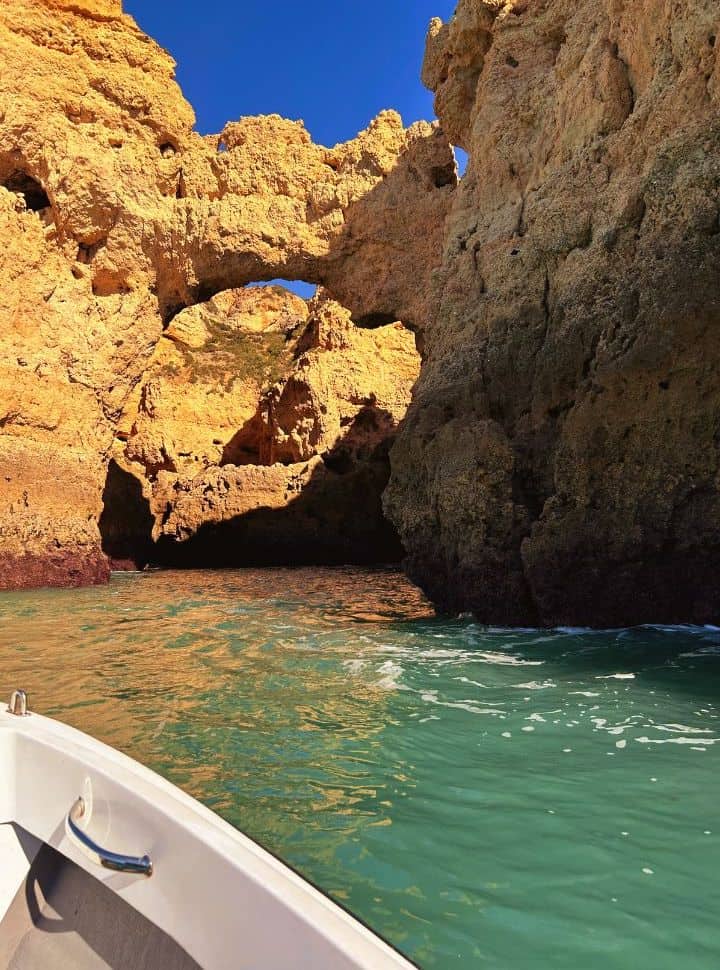
Our guide who took us on a Grotto Tour told us that the ocean reaches 20°C in summer and is as calm as a lake; the ideal time for swimming, kayaking, diving, etc.
In the winter months, you are of course more limited when it comes to water activities.
Boat tours do operate in the winter season. But if the wind isn’t favorable then they do not go. This is also the case for the summer by the way. If the wind is from the south, then it is a no-go.
Dolphins come to the Algarve from May to September, when the water is warmer and calm. Unfortunately, you will miss this unique experience in the winter season.
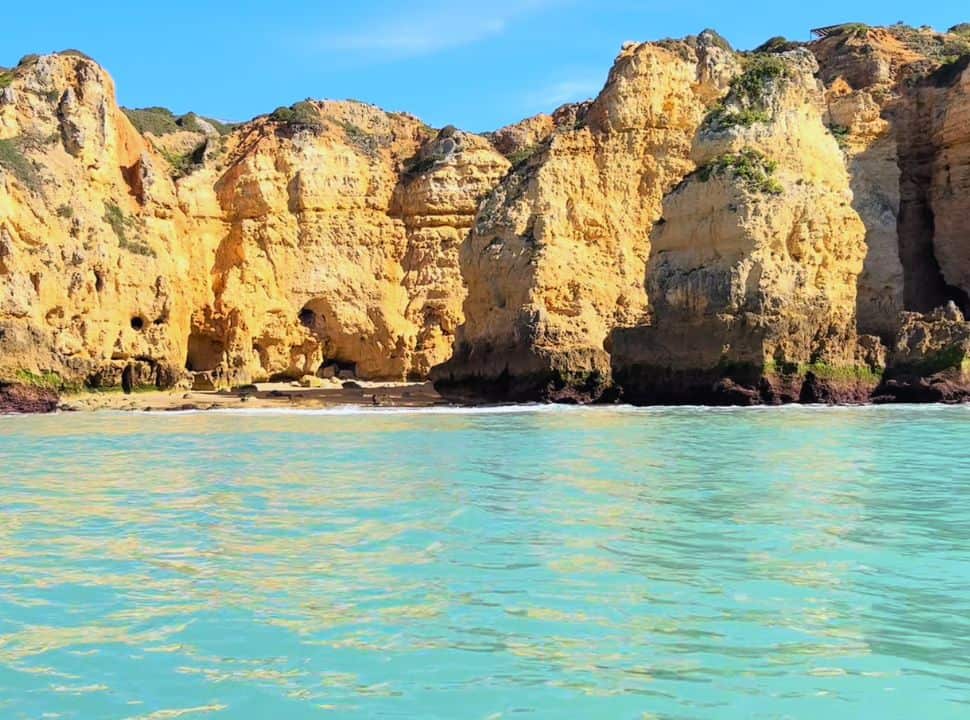
When we were in Lagos, we wanted to go on a Grotto Tour. However, we had to change our plans slightly because the weather was not good during our first days.
Luckily we were able to go on our last morning. It was a great experience and we highly recommend it.
Best time to visit the Algarve
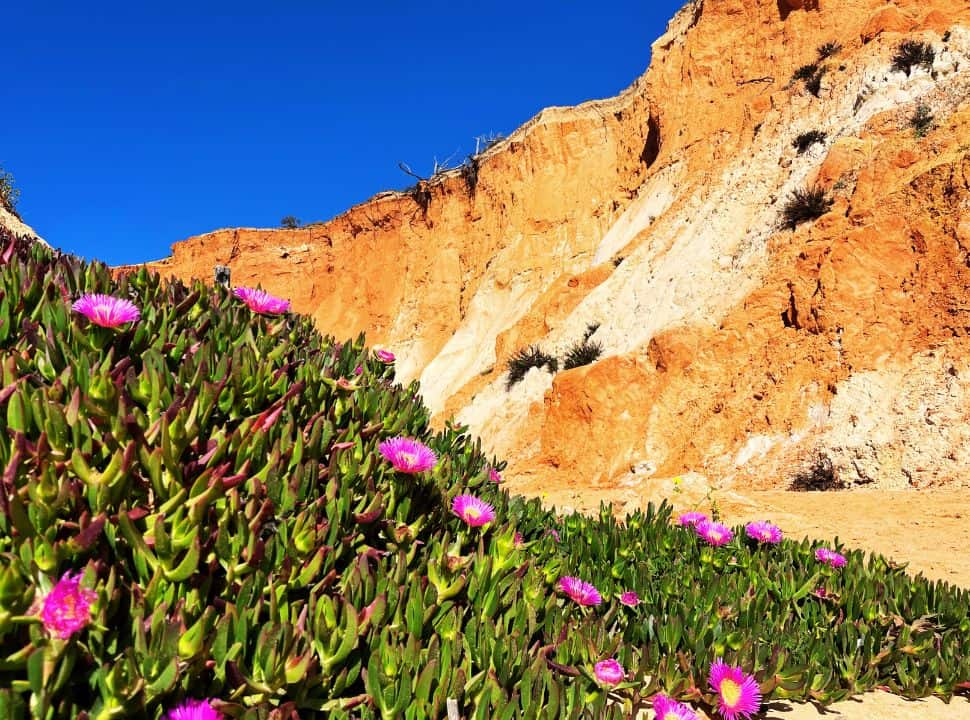
There are three factors that pretty much determine the best time to go to the Algarve:
- the weather
- the crowds
- the prices
To have the most of all three then the best time to visit the Algarve is mid-May to mid-June and mid-September to early October. During these months temperatures are still pleasant for hiking and touring around. You might even be able to spend time sunbathing at one of the many quiet beaches.
But that said…
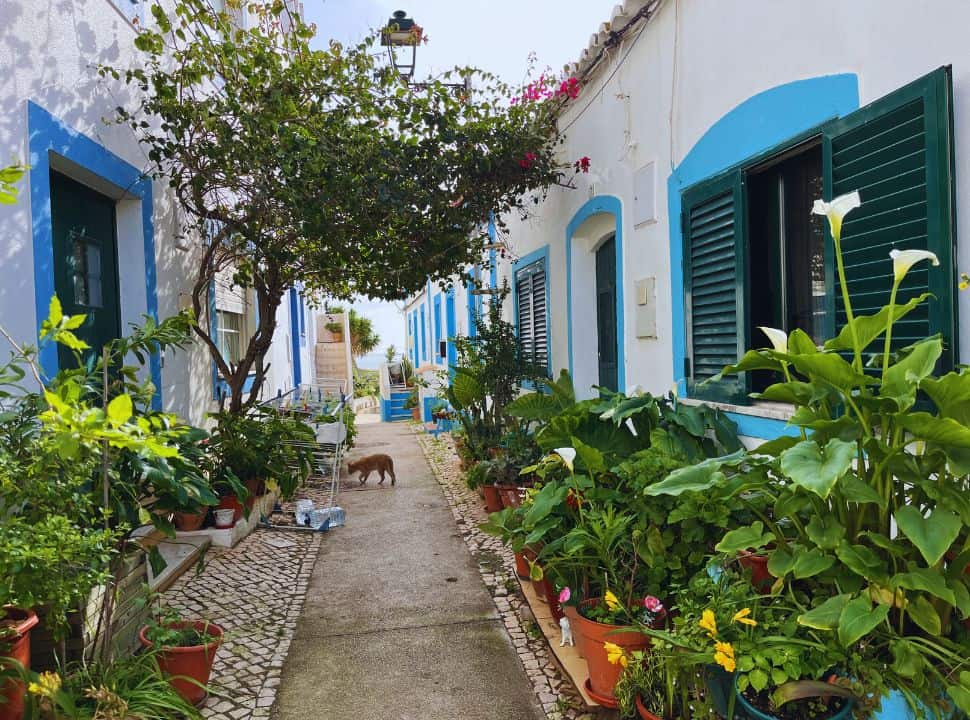
If you want to escape the cold temperatures of Northern Europe, then the Algarve is the best place to go. The warmer temperatures and sun in the South of Portugal are a comforting change to the dark cold winter days.
On our visit to the Algarve in winter, we could enjoy hikes, deserted beaches, and no crowds in the popular destinations.
If you are seeking a beach holiday at gorgeous beaches and stunning clear water, then there is no way around it: the best time to the Algarve is July and August.
Things to do in Algarve in Winter
The Algarve is one of the most popular European summer holiday destinations. But for an active traveler, there are plenty of options during the winter season too.
Perhaps even more…
Hiking
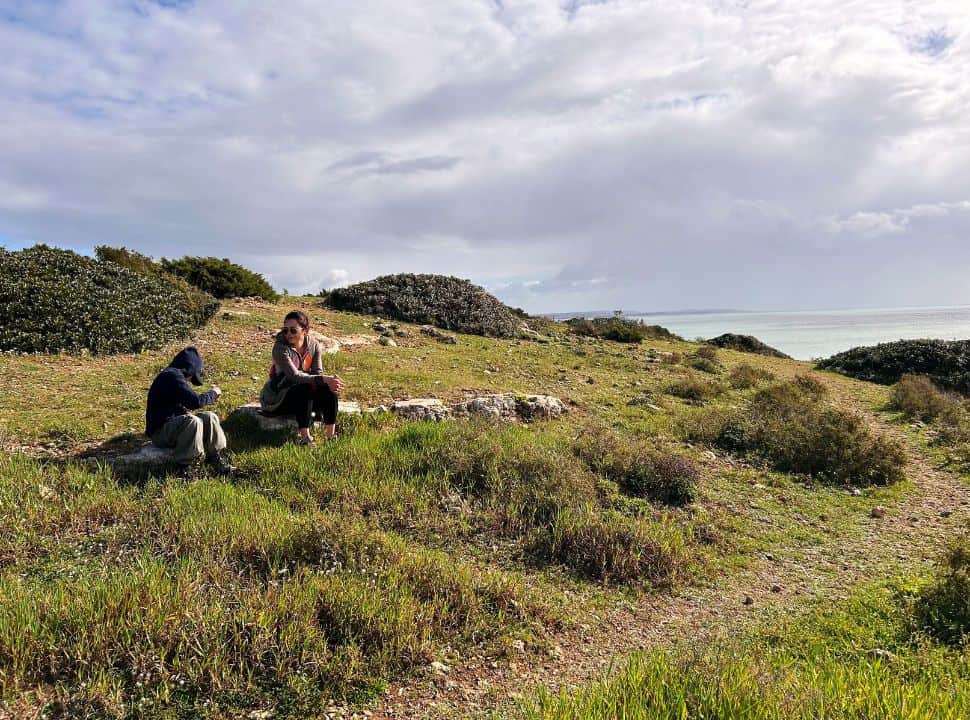
Winter is the perfect time to go hiking in the Algarve. The sun is up but it isn’t too warm. You will not feel like you are burning away. Plus with fewer crowds, you can follow the narrow paths without a fuss.
There are many trails that you can take. We even saw hikers in the middle of nowhere when driving along the west coast,
But these are two hikes you pretty MUST do when you are in the Algarve.
Ponta da Piedade
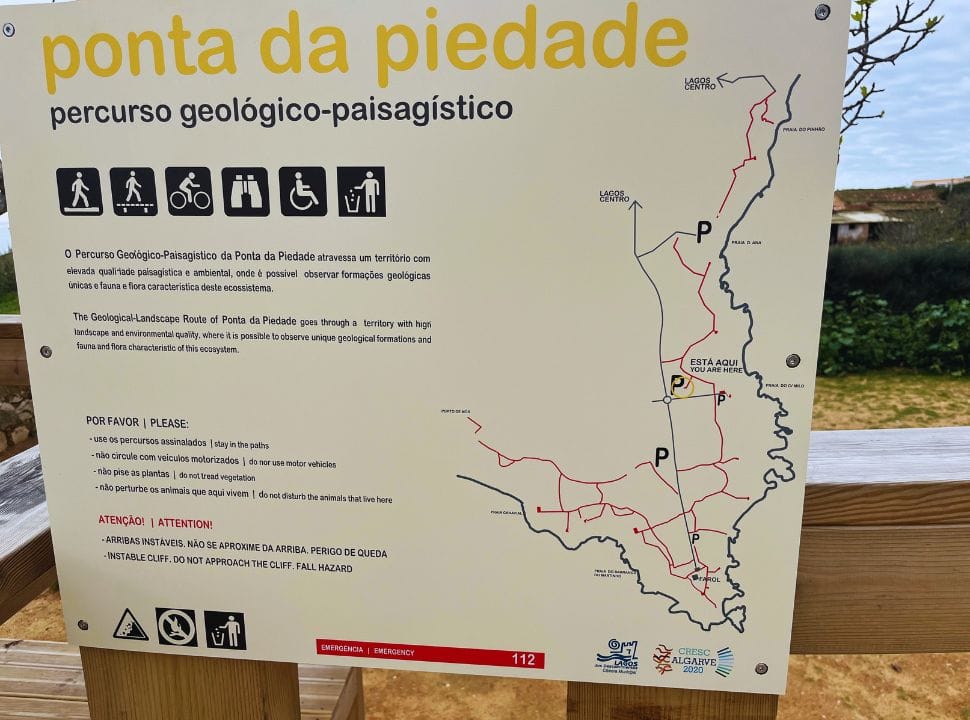
- Difficulty: Easy
- Start: Lagos
- Duration: 45 minutes, no breaks
- 3km one way
The Ponta da Piedade is a wonderful trail that will easily take you along the most beautiful cliff beaches in the Algarve such as Praia Dona Ana, Praia do Camilo ending at Ponta da Piedada. Along the way, you can take in the stunning viewpoints.
You can either end at Ponta da Piedade or continue west for more stunning views.
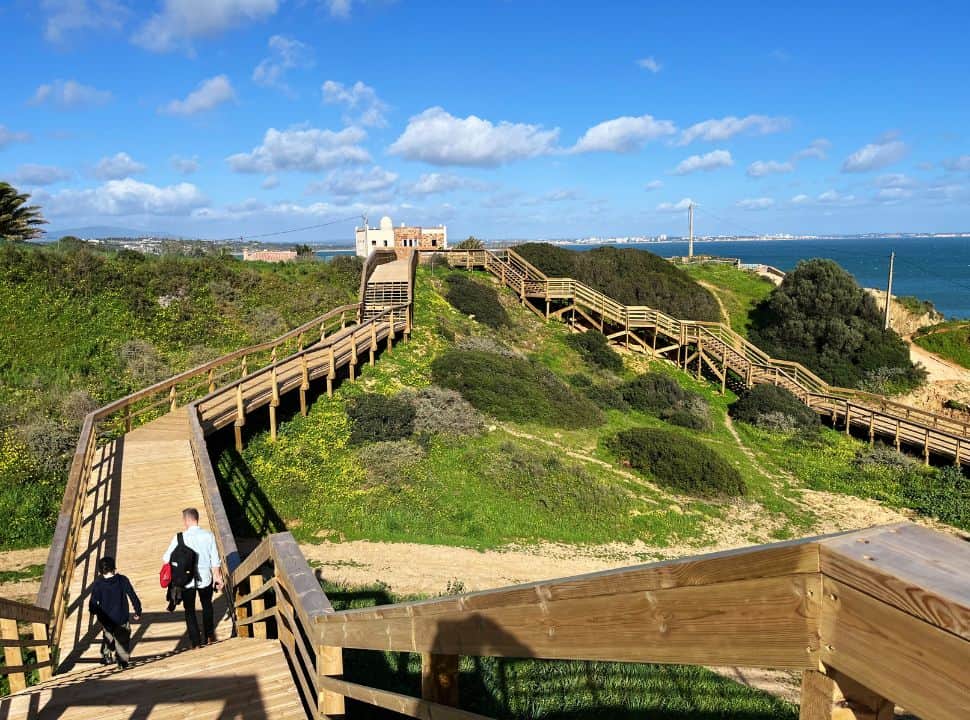
Since 2021 the local government has built a wooden boardwalk. It starts at Lagos town. To get there go to the small street Rue Jose Formosinho. At the end of this street, you will find the newest part of the boardwalk, which was finalized at the end of 2023.
The boardwalk makes this hike pretty comfortable. There are parts where it ends and you will see dirt trails leading to the cliff edge.
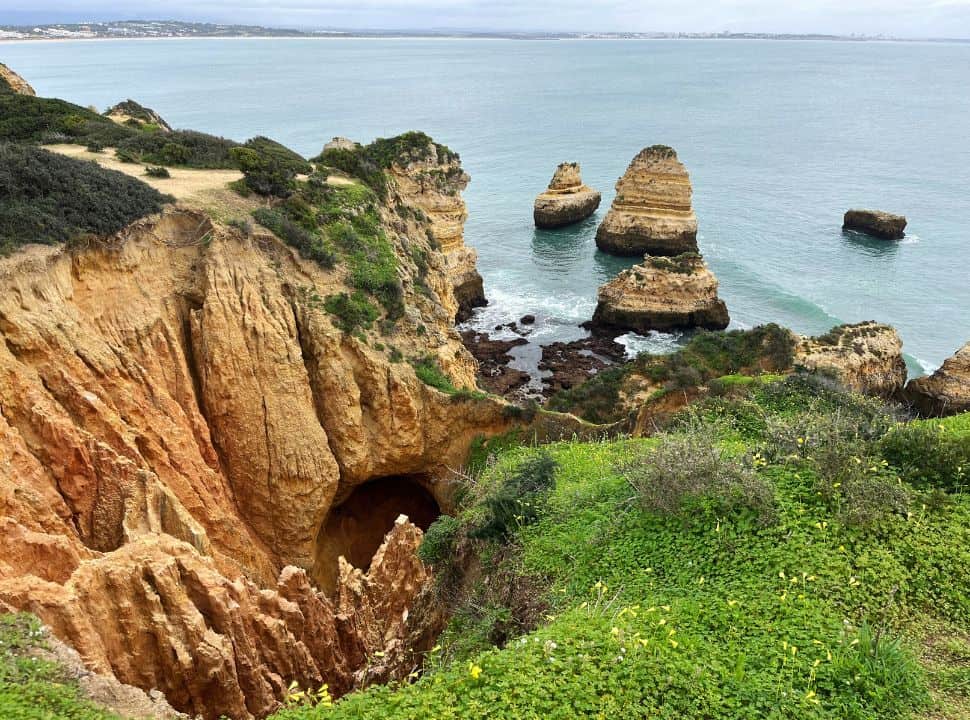
This used to be the old trail and you have a better view than just sticking to the boardwalk. But since they want to turn this area into a bird breeding ground, I can imagine you can not get off the trails in the future.
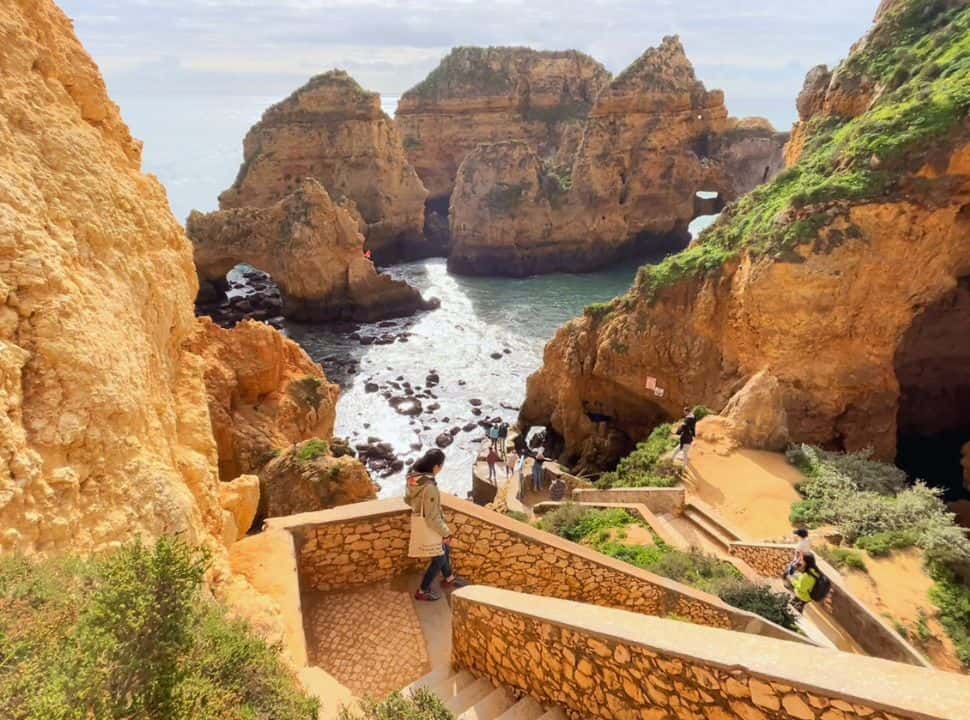
7 Hanging Valleys Trail
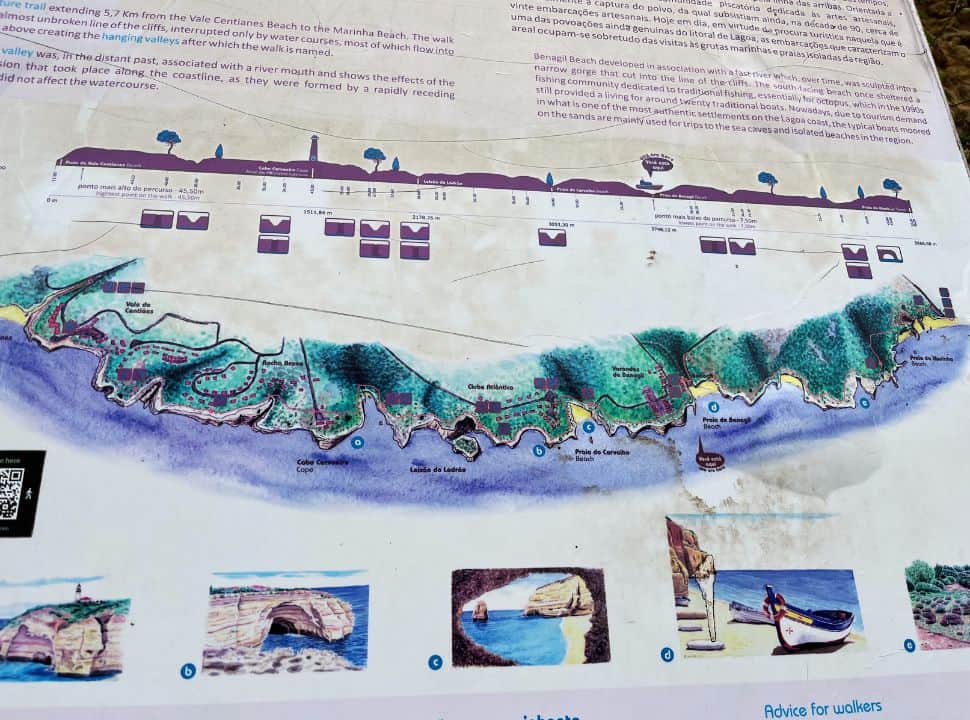
- Difficulty: Moderate
- Start: Praia da Marinha or Praia do Vale de Centianes
- Duration: 3h one way
- 6km one way
- walk back or arrange a pickup
The 7 Hanging Valleys Trail is considered one of the most beautiful hikes in the Algarve. It takes you along the rough lime cliff coast, which is dotted with spectacular rock formations and gorges.
The clearly indicated trail is easy to follow. However, there are some parts where you have to do steep climbs and descents. Therefore, it is considered a moderate hike.
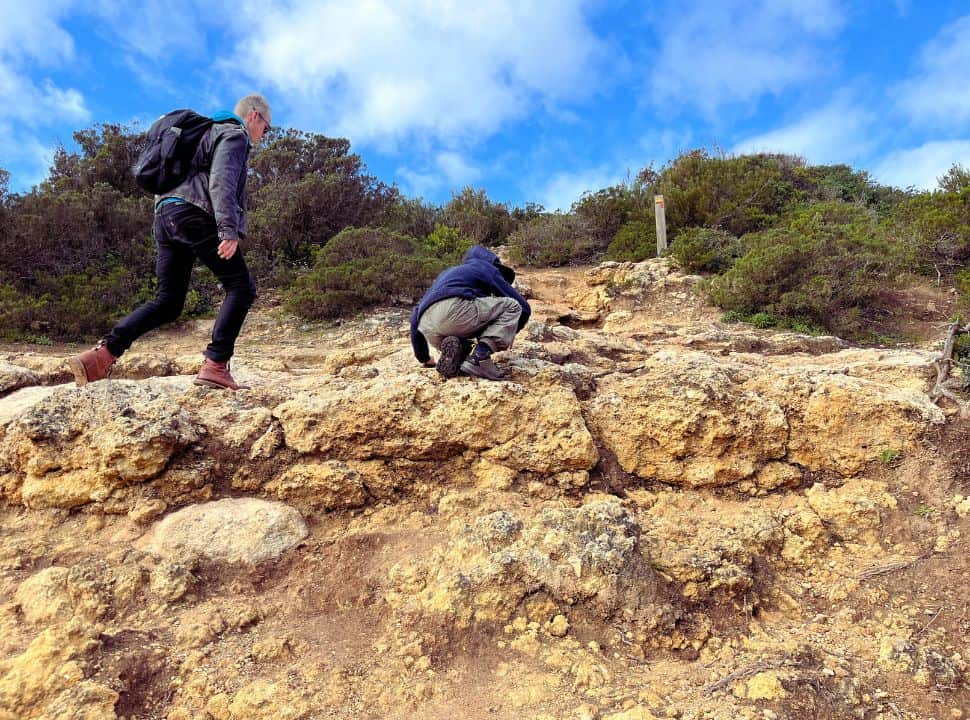
We suggest renting a car and heading to the starting point at Praia da Marinha because the parking lot is quite big here. Additionally, the Praia da Marinha beach is amazing. You can visit at the beginning or end of your hike.
To reach the beach take the stairs down located on the left side of the viewpoint.
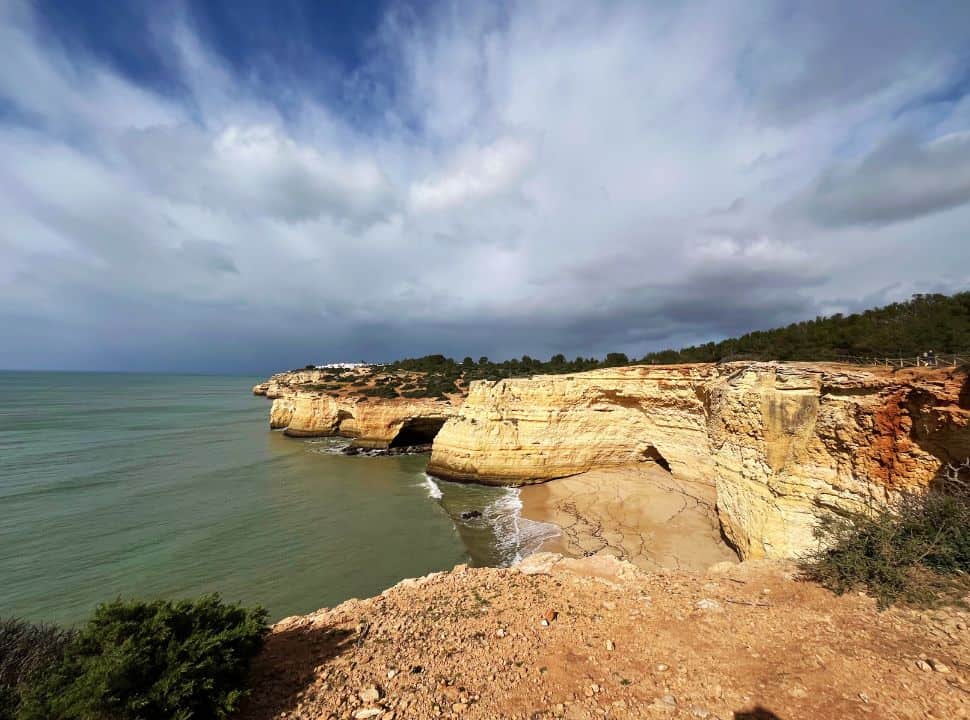
You can also start at any other point along the trail, such as Benagil Beach or Praia da Carvalho. The final point of the 7 Hanging Valleys Trail is at Praia do Vale de Centianes just 2km before Carvoeiro.
When our son saw the view of the beach Praia da Marinha, all he could talk about was going down to swim there. Eventually, we only did half of the trail to Benagil beach. We highly recommend this if you don’t want to spend the whole day hiking.
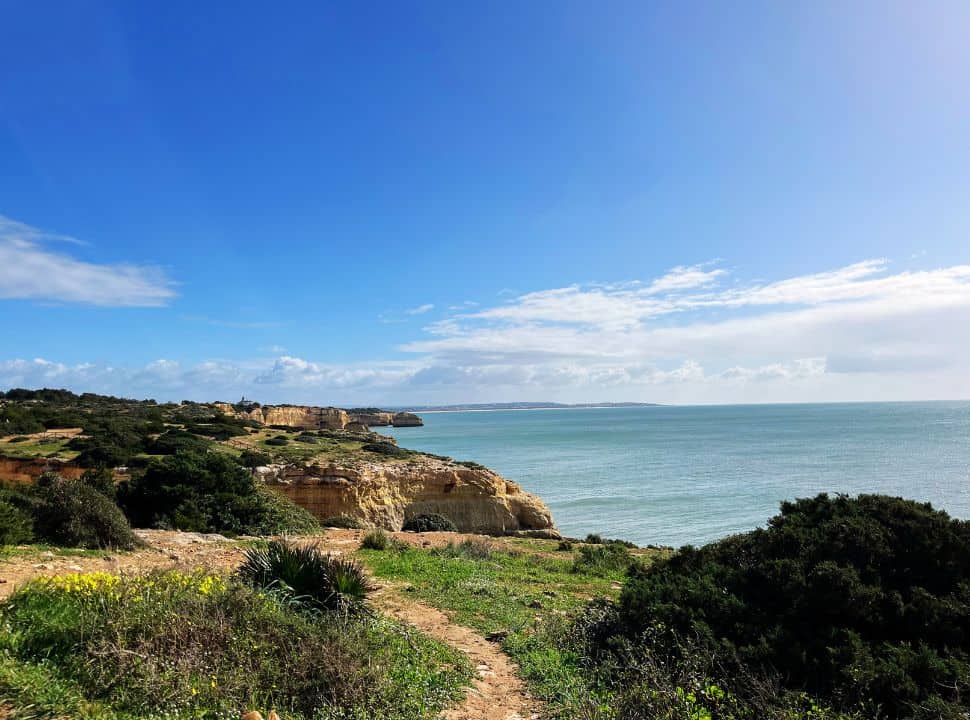
Since the hike isn’t a loop you need to hike back or arrange a pickup to take you back to your starting point. Uber is widely available in the Algarve and a better option if you want a ride back.
The Fishermans Trail
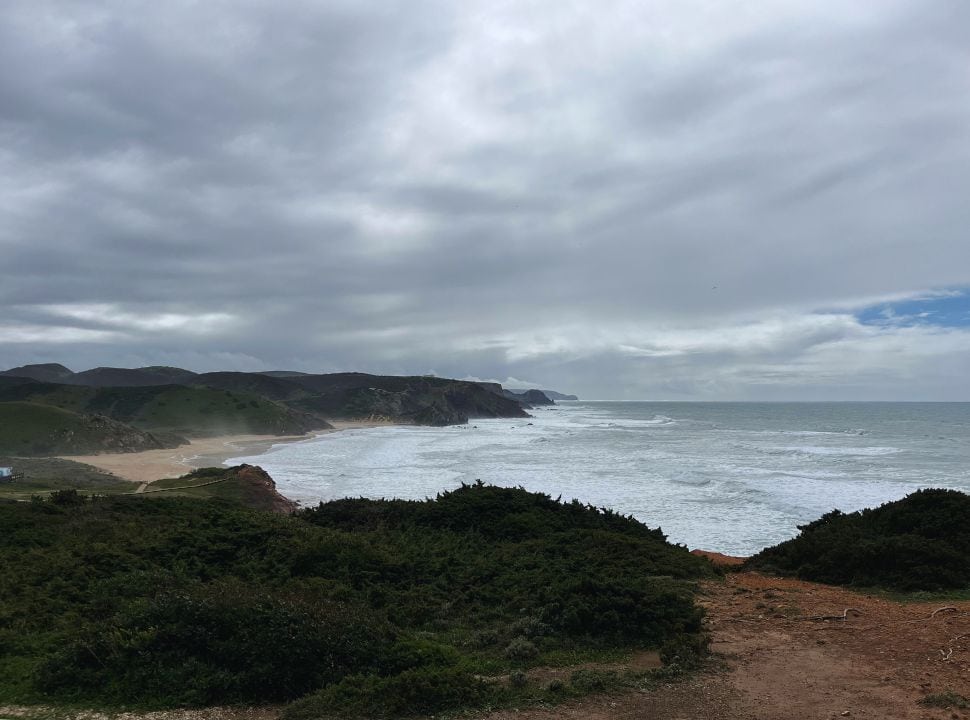
The fisherman trail is 226,5km long and runs through the provinces of Alentejo and the Algarve. It is a 13-day hiking trail that takes you through the Vicentina Coast Natural Park with coastal scenes and stunning nature.
As you can imagine, you need to be an avid hiker to do this trail. Luckily you can also do parts of this trail as a day hike. The Rota Vicenta is a network of trails in Alentejo and the Algarve and they have listed 24-day hikes ranging from 2km to 12km. All of them are circular routes.
This is a great way to explore the amazing west coast of the Algarve.
Historical Way
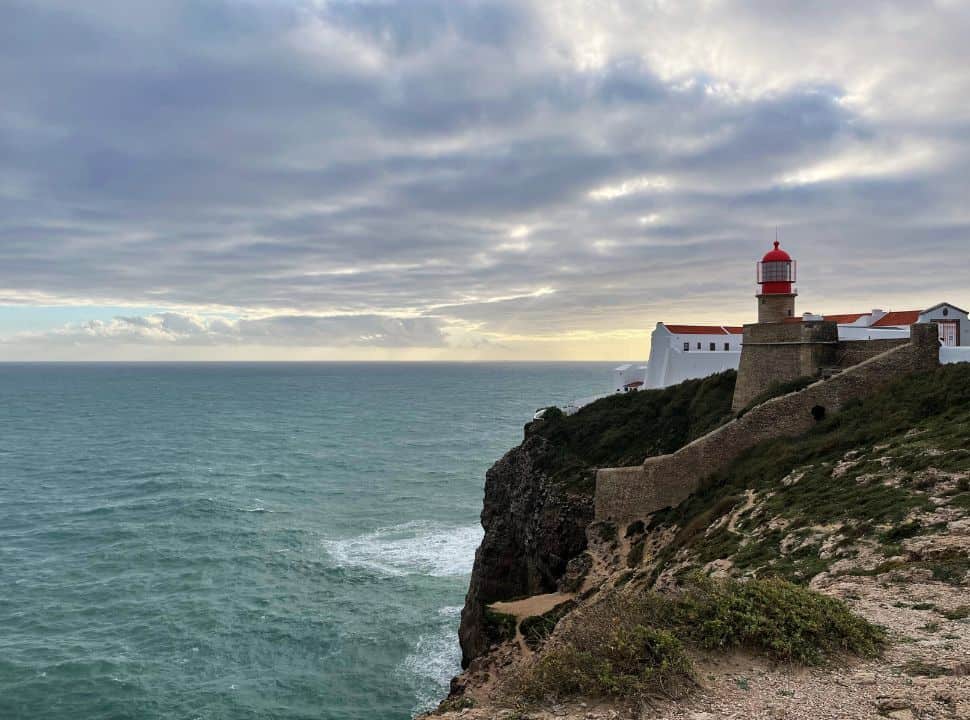
Similar to the Fishermen trail, the Rota Vincenta also has a 6-day hike through the interior of the Algarve. The 263km trail takes you through rural towns and villages, along mountain ranges, valleys, and rivers.
The trail starts at Santiago do Cacem and ends at the most southwestern point of Europe, Cabo de San Vicente. For exact details check the Rota Vicenta website
Boat Tours
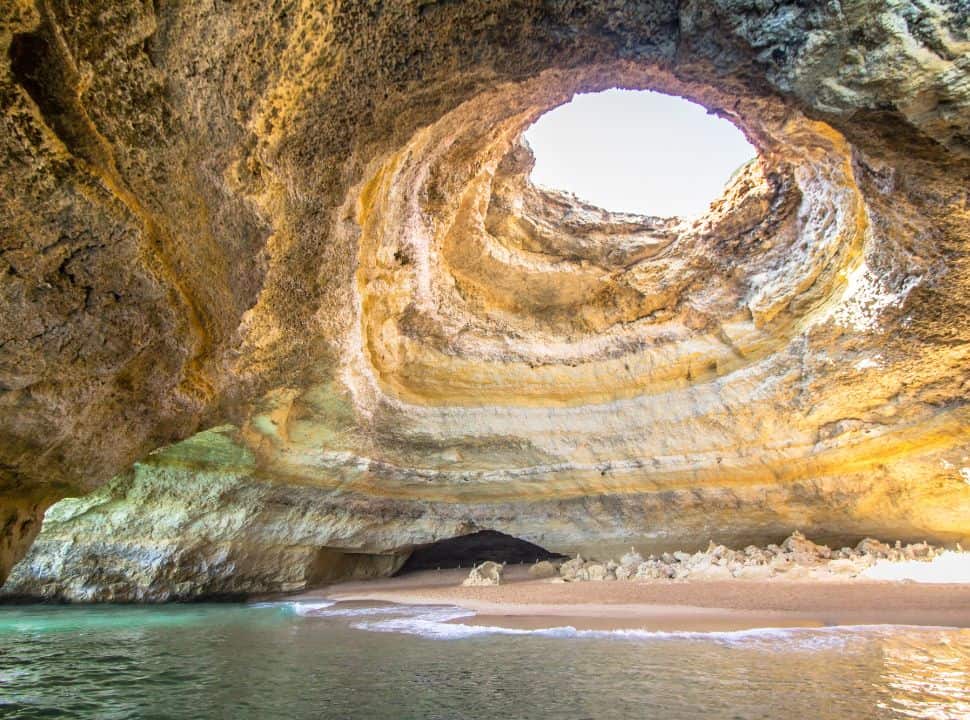
The view of the beaches along the cliff trails is stunning, but we highly recommend also going on the many boat tours that leave from various towns.
The most common tours in the winter season are:
Grotto Tour – leaving from Lagos
Benagil Cave Tour – leaving from Benegil Beach, Carvoeiro, Portimão, Lagos, and even Faro
Generally speaking, the tours continue during the winter season. But if the weather or the wind conditions are unfavorable, then you won’t be able to go.
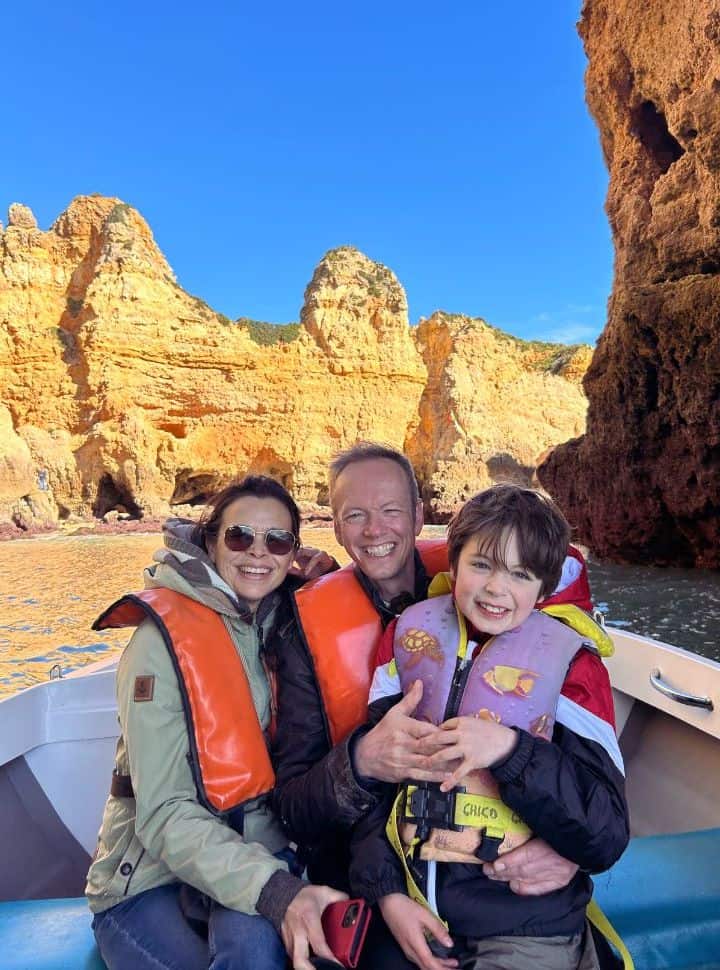
When we were in Lagos in February, we had to wait until our very last day. The wind conditions hadn’t been good. According to our guide, we were the first trip in weeks.
Once you have made a booking and think the wind is still strong, trust the boat tour operator. If the wind is coming from the right direction, then don’t let the wind withhold you from going.
The wind seems non-existent along the yellow cliffs. We had a great time on the crystal-clear water. My son particularly loved the fast bumpy ride back.
Visit the quiet Algarve Southern Beaches
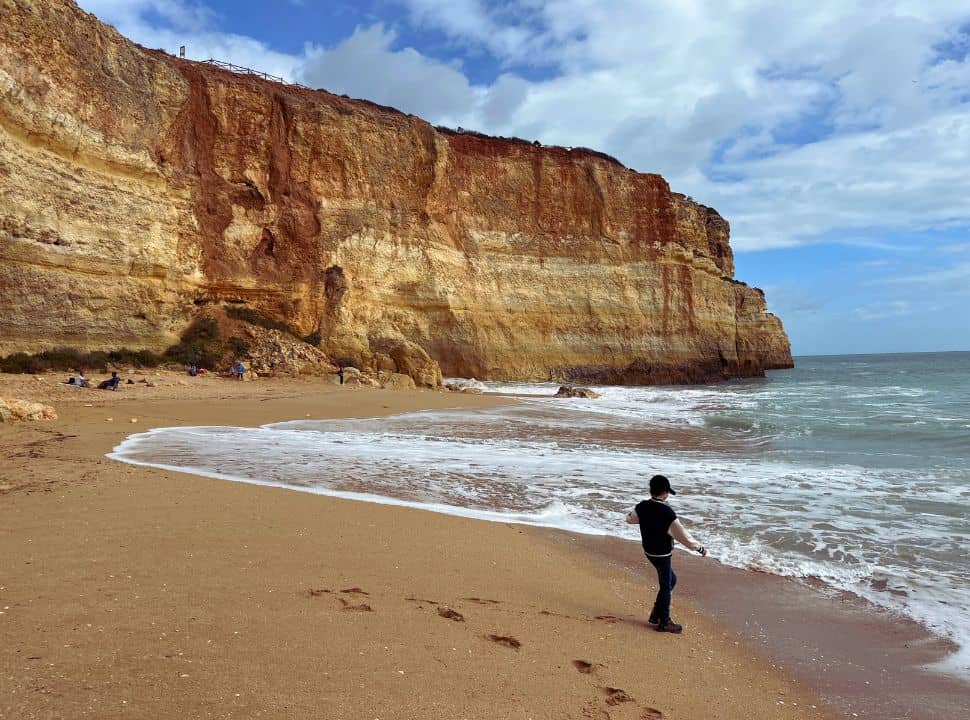
The beaches near Lagos to Albufeira are known as the Golden Coast. Here you can find the famous yellow cliff beaches that depict millions of years of rock formation.
You will need weeks to visit all the beaches along the Algarve Coast. The list goes on and on, each one having its unique feature such as a cave, only accessible during low tide, a series of rocks rising from the water.
Luckily you can hike along the coast to see many of them from above. Make sure to climb down where possible to stroll along the empty beaches to see it up close.
Don’t get too stressed out by seeing as many beaches as possible. You have to accept you can’t visit all of them. Just make sure you choose various types of beaches, such as a couple along the west coast, some cliff beaches in the south, and red rock beaches near Albufeira.
Cliff beaches near Lagos
You can easily reach all the cliff beaches near Lagos on foot from town. The wooden boardwalk makes it even easier to reach whichever beach you want.
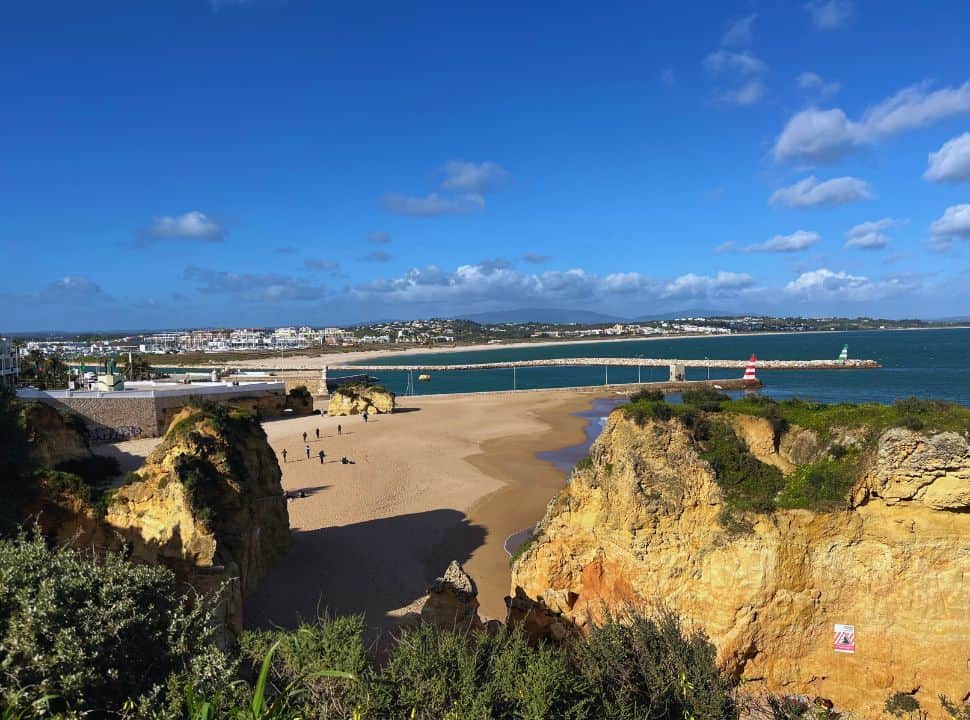
The beach nearest to town is Praia Da Batata. It is located just north of the fort. The spacious beach has Lagos town on one side and cliffs on the other. Praia Da Batata (Potato Beach) got its name when the beach was covered with potatoes after a shipwrecked just offshore.
Unlike the neighboring beaches, we noticed that it gets pretty windy here. It is popular because it is so close to town, but we recommend walking further if you want a more secluded beach.
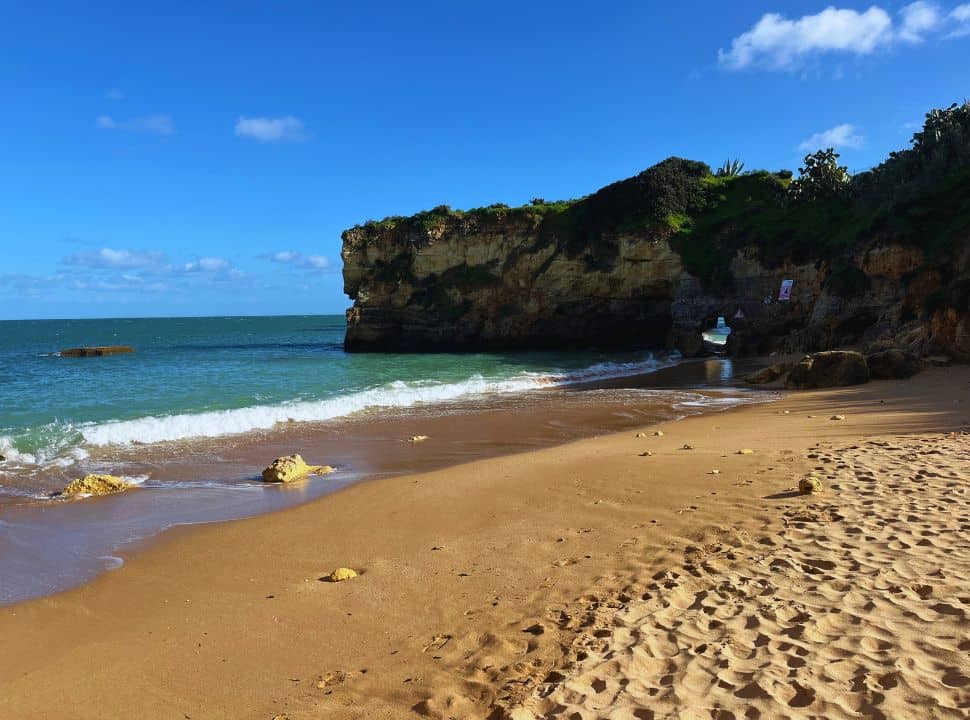
Another beach very near to Lagos town is Praia Do Estudantes. As you can imagine, it can get pretty busy here in the summer. It is known for its Roman bridge connecting two cliffs.
Tunnels lead you to other beaches such as Praia do Pinhao, but you can only access them during low tide.
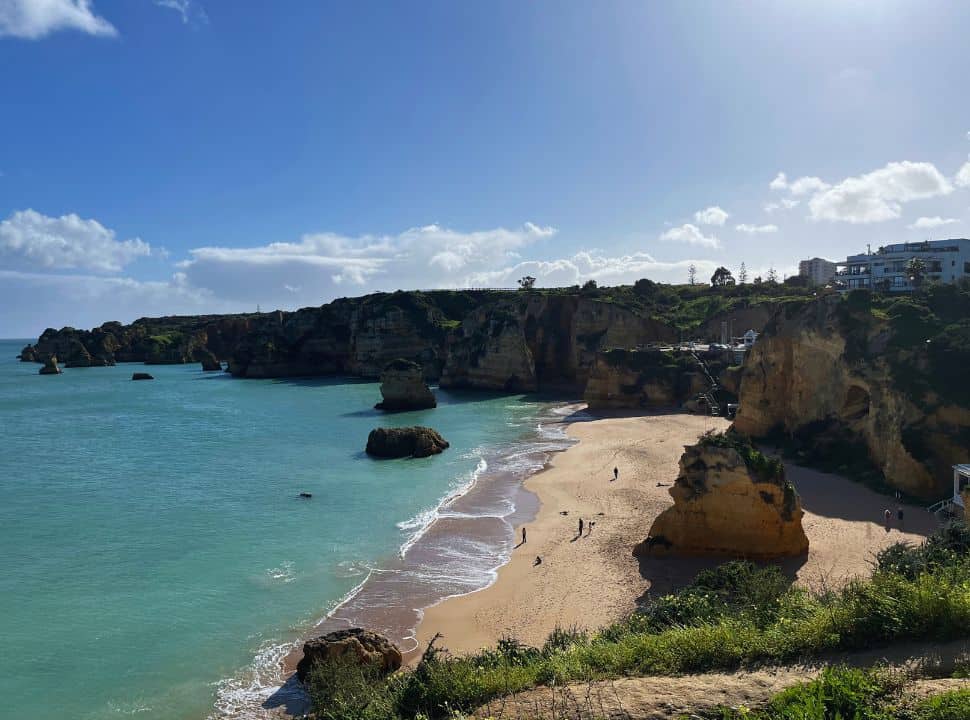
Praia Dona Ana is a medium-sized cliff beach with beautiful rock formations rising from the water and on the beach. Huge resorts are located along the cliff, so in winter you can still find many people enjoying this beach.
It’s easy to reach by car. If you want to reach it by foot, just follow the boardwalk from Lagos.
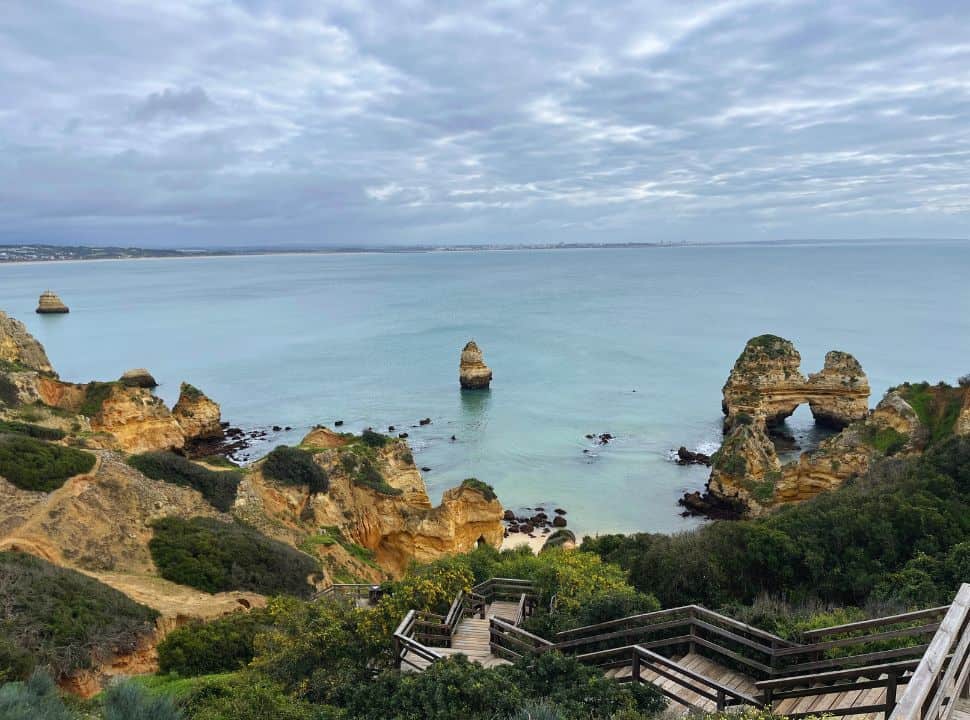
Praia Camilo is just 300m from the neighbouring beach of Praia Dona Ana. It’s a small beach between the cliffs; you can reach this secluded beach.
Unfortunately, the stairs to the beach were under maintenance so we couldn’t visit the beach up close. This happens a lot during the off-season.
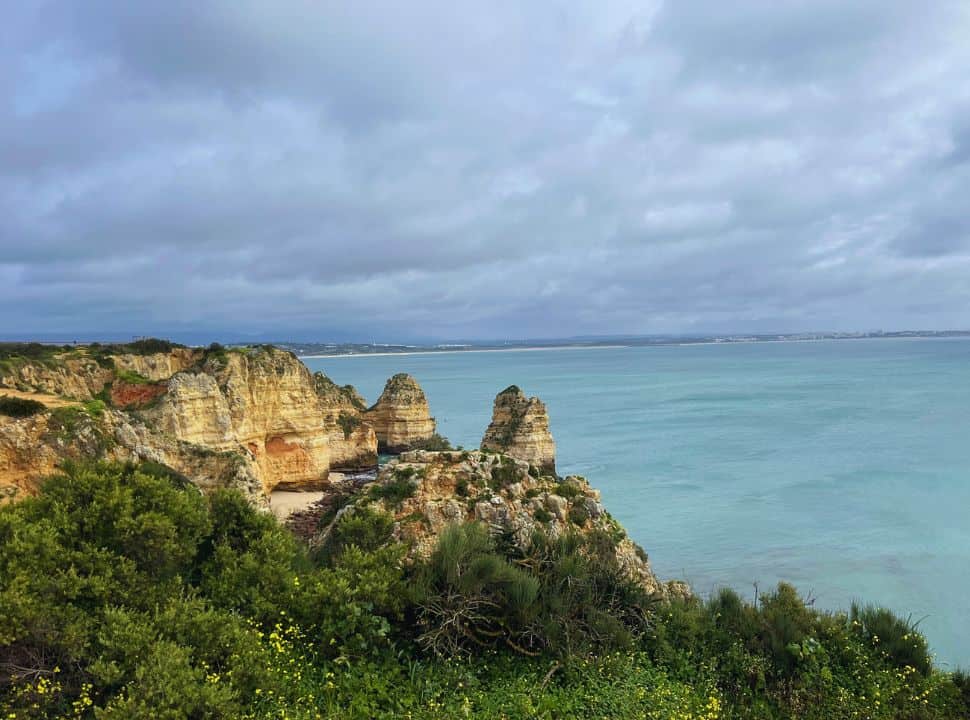
Praia Dos Pinheiros is a tiny beach, hidden between the cliffs, and stays unnoticed by most people. The boardwalk takes you past it. So to reach the beach you need to take the dirt trail down. Many people reach this beach by kayak in the summer months.
As our Grotto Tour Guide told us, this beach is a ‘tutti frutti’ beach with melons and bananas. It is an unofficial nudist beach. It’s a hard-to-get-to-beach and not worth climbing down in the winter months. There are many other deserted beaches that you can access more easily.
Long stretched beaches near Lagos:
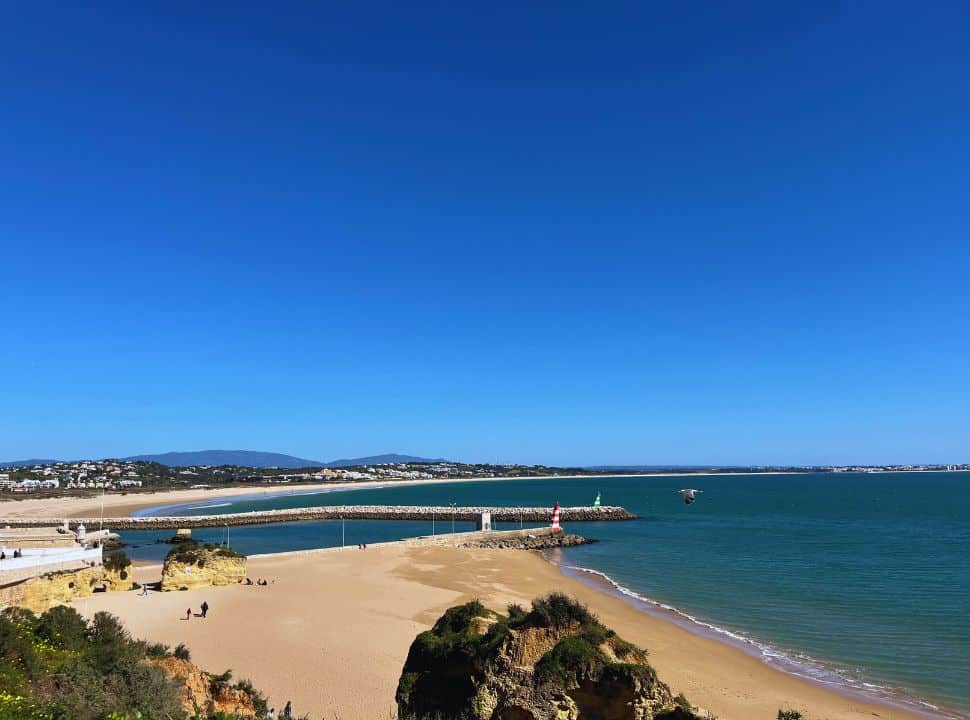
Meia Praia is located just north of Lagos. It is one of the longest in the Algarve region, ideal for walks along the beach. It’s a dune beach, so there are no spectacular colored cliffs here. However, the sand is soft, and there are no rocks.
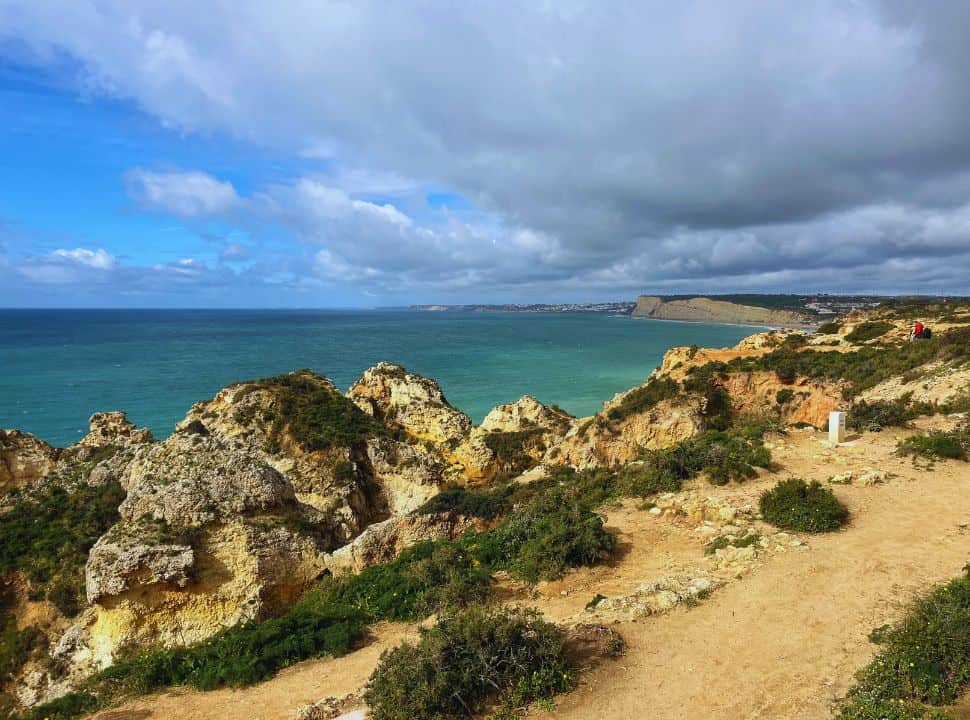
Praia do Canavial and Praia Porto Mos Beach are just around the tip of the famous Ponta de Piedada. Praia Porto Mos Beach is the second longest beach and lies between cliffs, while Praia do Canavial is much smaller.
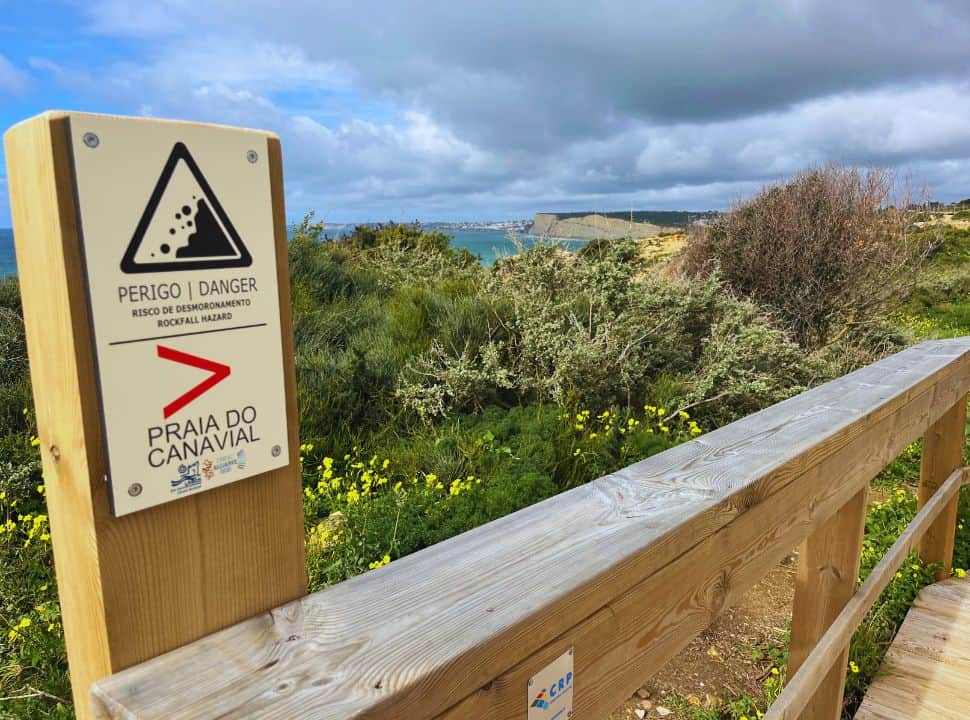
While these beaches are nice, we recommend just admiring them from above. Unlike the cliff beaches closer to Lagos, these beaches catch a lot of wind from the Atlantic Ocean. Something you might want to avoid during the winter months.
Beaches near Portimão
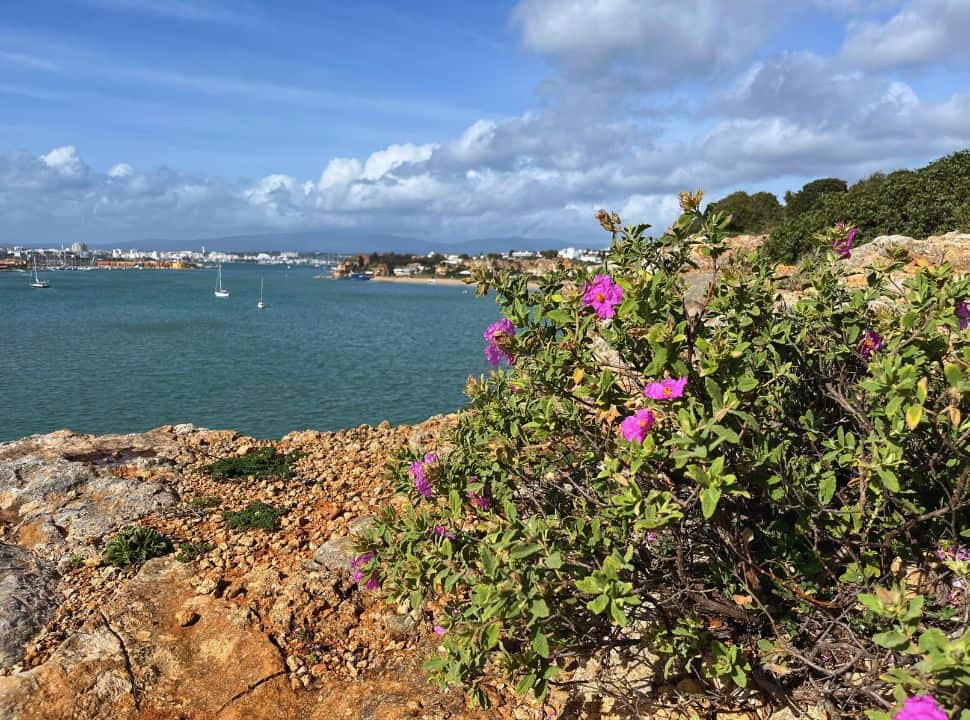
The amazing cliff beaches continue towards the west. Nearby Portimão there is the popular long-stretched beach Praia da Rocha. However, along this part of the coast, there are ochre-colored cliff beaches just like those near Lagos.
Somehow these beaches don’t seem to get that much attention compared to other beaches in the Algarve. Unfortunately, we didn’t have time to check some out. But we would have loved to visit:
- Praia João de Arens
- Praia dos Três Irmãos
- Praia do Vau
But from experience, we know that all beaches in this part of the Algarve are stunning. After seeing a couple, we noticed they started to look the same 🤣.
Beaches near Carvoeiro
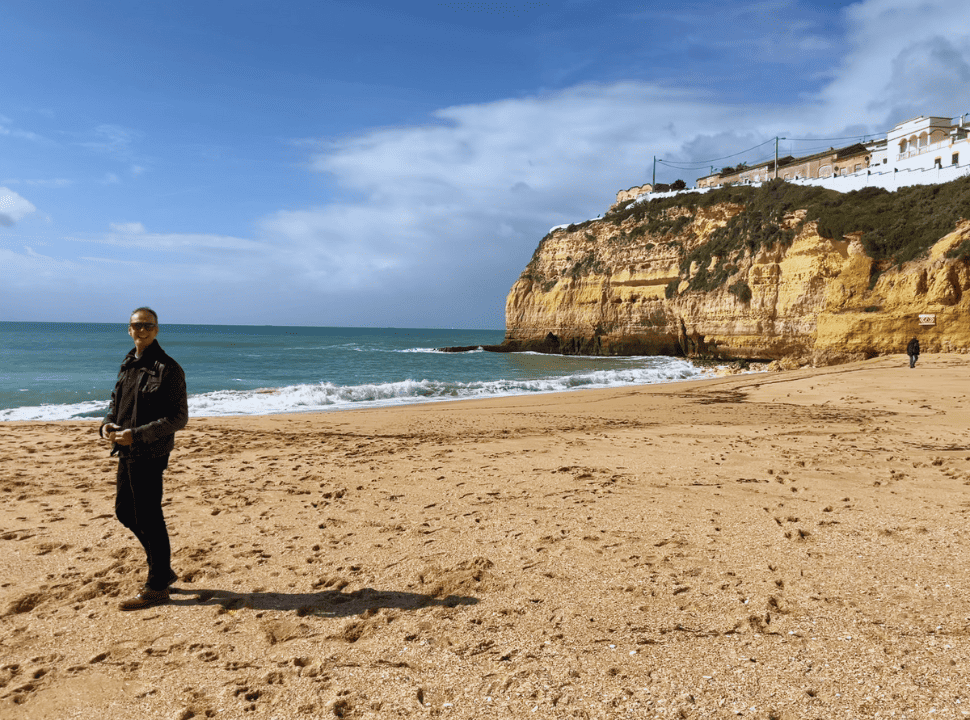
The highlight of Carvoeiro is its beach and Algar Seco Rocks. Both are great to visit in the winter. If you are staying in this popular beach town then you can also visit the Praia do Paraíso.
It is located west of town and you can reach this small strip of beach by descending a long flight of stairs.
Beaches near Benagil
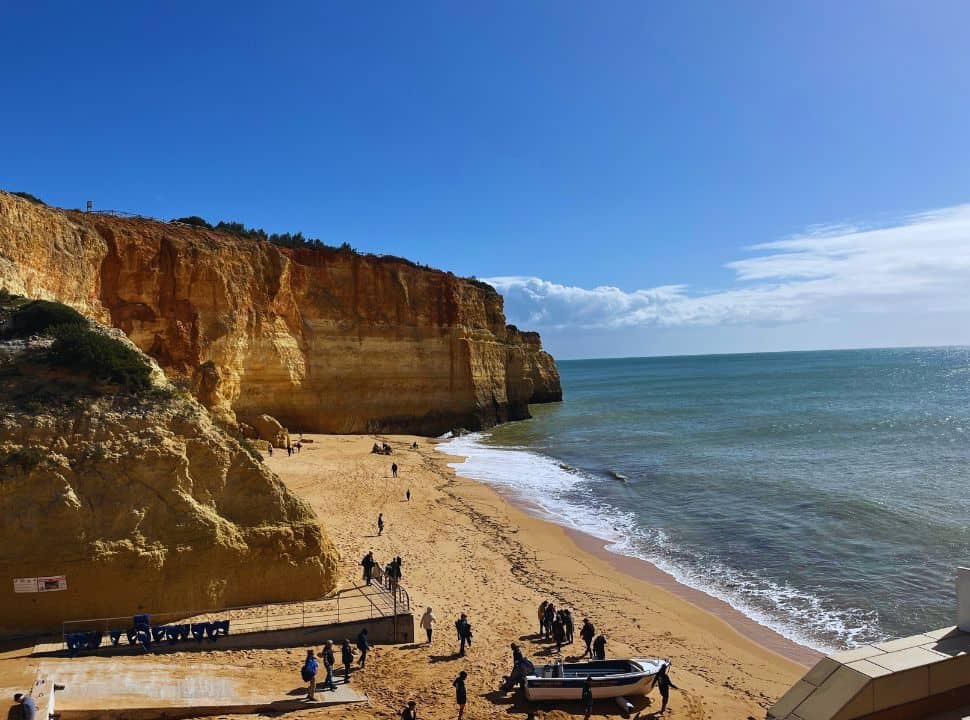
Benagil is a small village with a beautiful beach. This beach is mainly known for its boat trip to the nearby Benagil cave.
Benagil Beach is worth the visit, either by car or during the 7 Hanging Valleys hike.
Other beaches along the same trail and near Benagil are Praia do Carvalho in the west and Praia da Corredoura in the east. The latter is only accessible by boat, kayak, or sub.
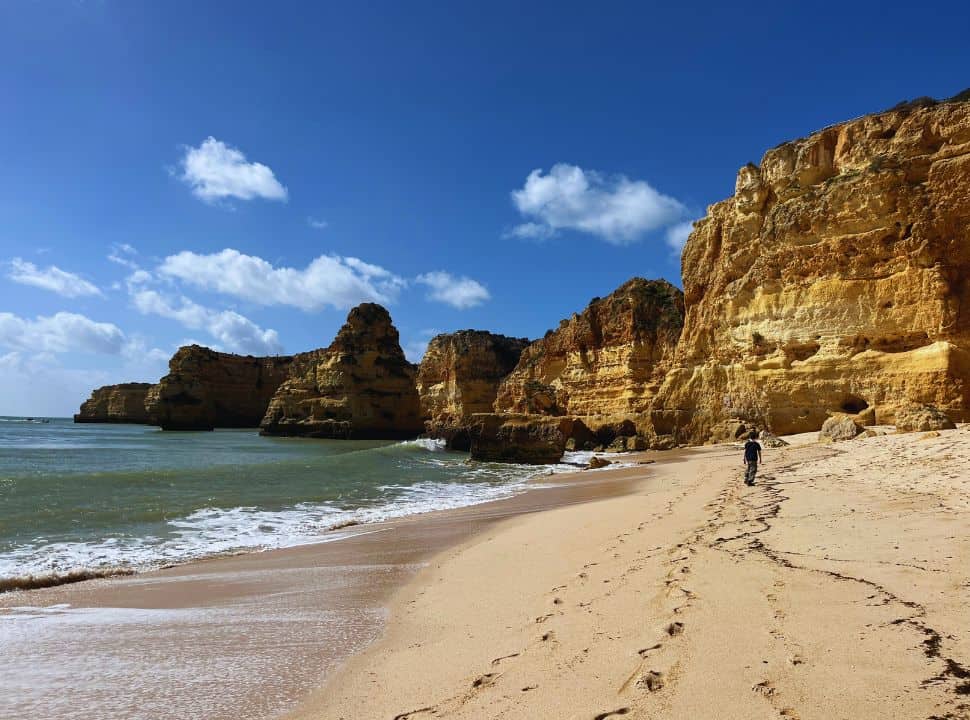
A beach further away, but still considered as the Benagil area is Praia da Marinha. It is the start of the 7 Hanging Valleys Trail and has a big parking area, so convenient to reach by car.
We loved this beach and can fully understand why it is considered one of the most beautiful of the Algarve. It is pretty long with the ochre-yellow golden cliffs typical for this region, but the rock formations in the water make this beach even more attractive.
This is a beach you don’t want to miss.
Beaches near Albufeira
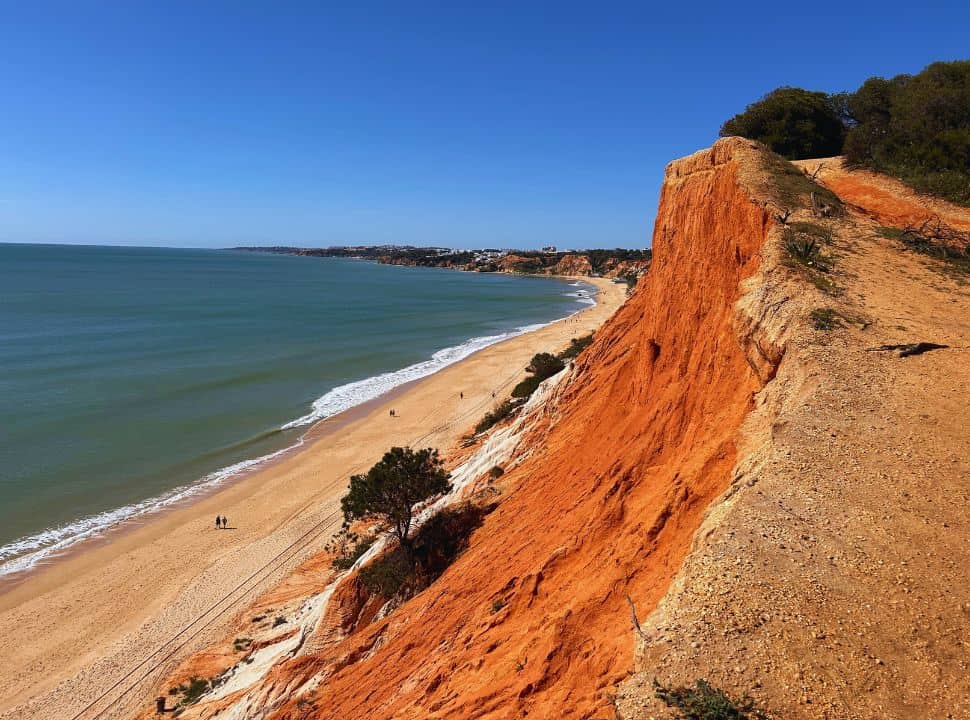
Albufeira is one of the most popular tourist destinations in south Portugal. It has long soft stretched beaches but some cliff and cove beaches too. Again, the list of beaches along this part of the coast goes on and on.
We highly suggest skipping them if you are in the Algarve in winter. Especially if you visited the cliff beaches near Lagos. Head straight to Praia da Falésia instead.
This beach blew us away. The red cliffs at this beach are something we had never seen before. The view from above is just spectacular.
We had great weather so this brings out the color of the rocks even more.
Beaches near Faro
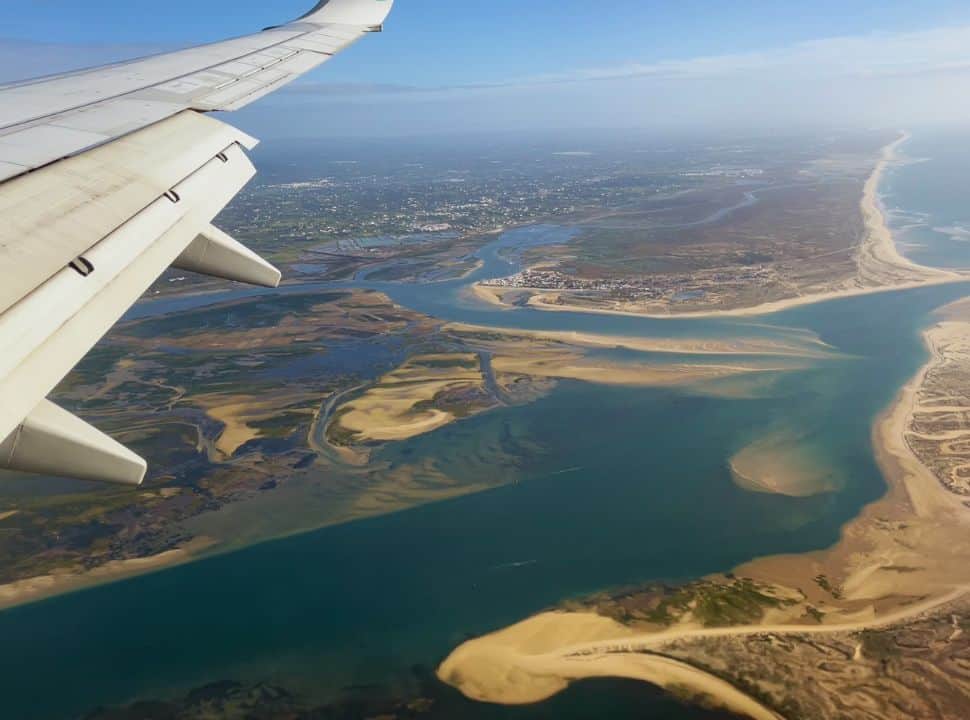
Faro beaches are known for their long-stretched beaches and are ideal when visiting this area in the summer months. Some beaches are only accessible by ferry and lie along a nature park, making them very unique.
The main beach in Faro, Praia de Faro is closest to town and is popular. Just like Praia da Barrinha, both beaches are the most busy in the summer. You can reach both beaches by car. However, you have to walk around 3km to reach Praia da Barrinha.
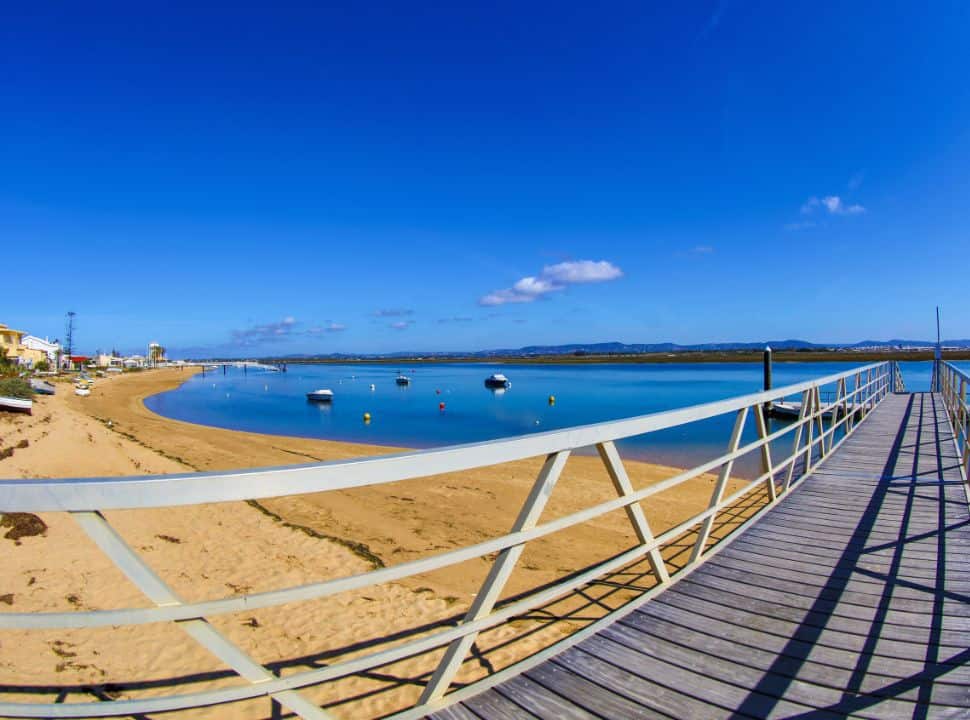
Praia da Barreta (also known as Praia Deserta) is pretty deserted all year round. You can only reach it by a 30 minute ferry trip that leaves from Porta Nova Pier.
If the weather is comfortable in the winter season, it is worth taking this ferry as it will take you along the Parque Natural da Ria Formosa.
Other beautiful beaches near Faro that are only reached by ferry are Praia da Armona and Praia da Culatra.
The Mighty Algarve West Coast Beaches
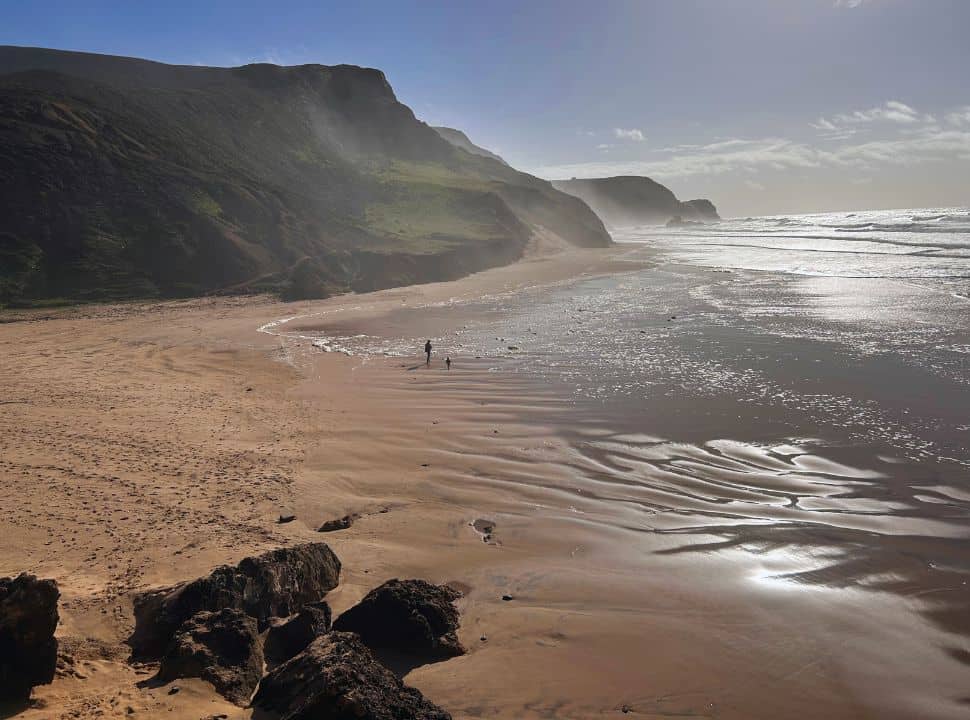
The beaches on the west coast of the Algarve are just as stunning as those on the south. The massive rock formation, dramatic waves hitting the cliffs, and the far-stretched beaches give these beaches a rough look. Especially in the winter.
There is a long list of beaches you can visit. We highly recommend renting a car and visiting a couple of them. Each one is unique on its own.
You can easily do two or three beaches in a day. We visited Praia da Cordoame and Praia da Bordeira. Surprisingly both beaches were a whole different experience.
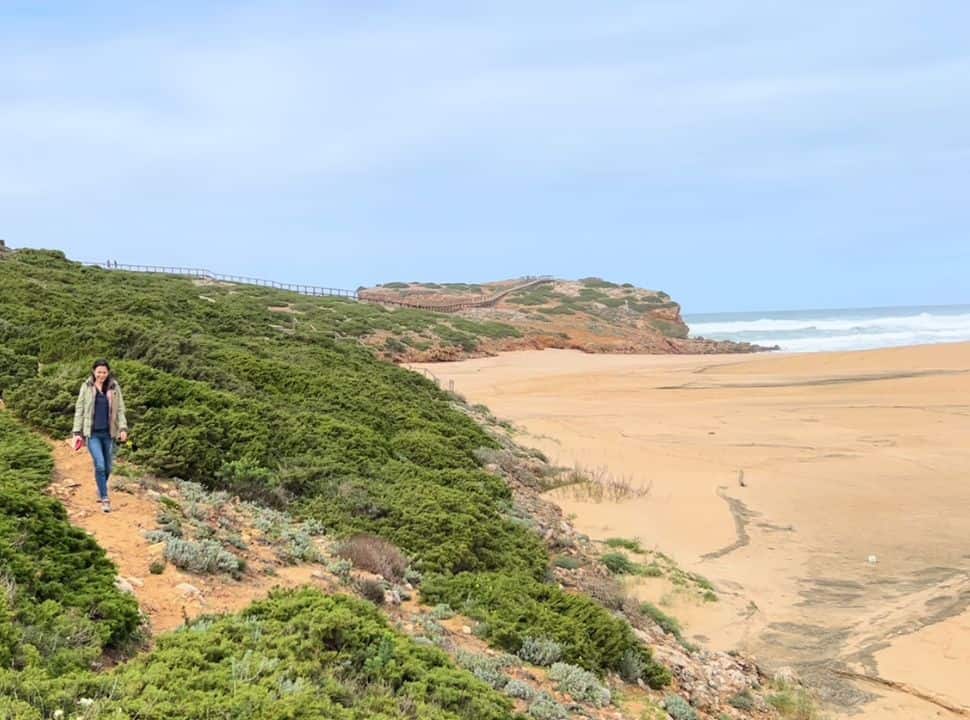
Praia da Cordoama is known for its dark black rock formations and beautiful cliffs covered with green vegetation. Praia da Bordeira is a board beach. To get the best view follow the designated trail to the tip of the cliff.
Best Places to Visit in the Algarve in Winter
The mild temperatures during the winter are the best time to explore the characterful town with its little streets and historical sights.
There are fewer tourists, so sufficient space to enjoy it at your own pace.
Faro
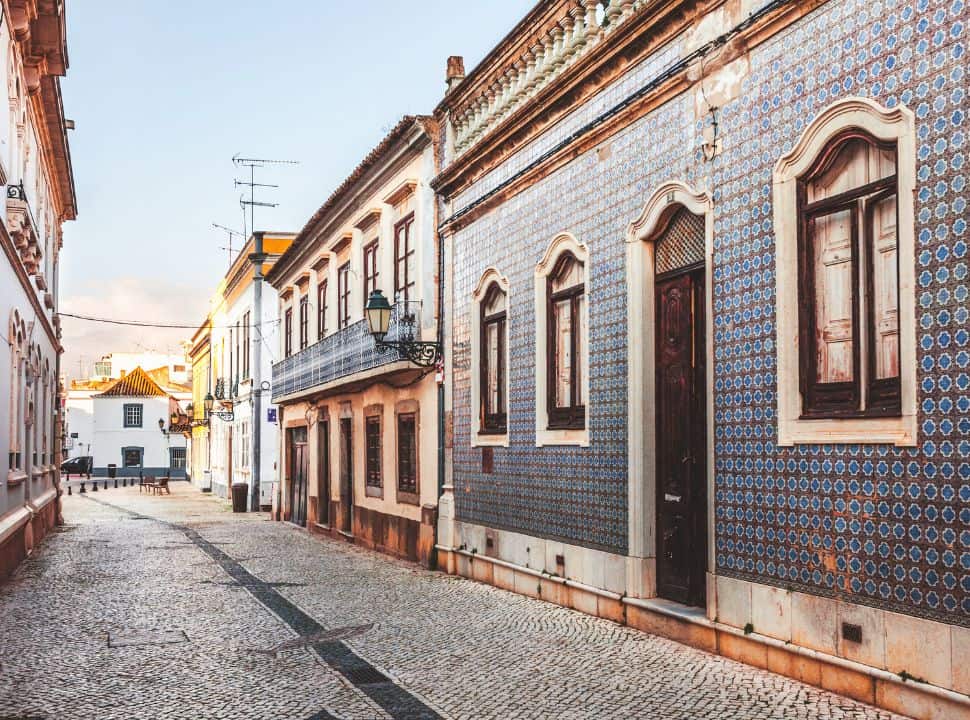
Faro is Algarve’s capital and is the city you will fly to if you arrive by plane. The city was heavily damaged in the 1755 earthquake. Nevertheless, it still has a charming old town (Cidade Velha) with winding cobblestone streets surrounded by medieval walls.
It has churches, museums, a bone chapel, and many cafes. The marina is a nice place for a stroll as well.
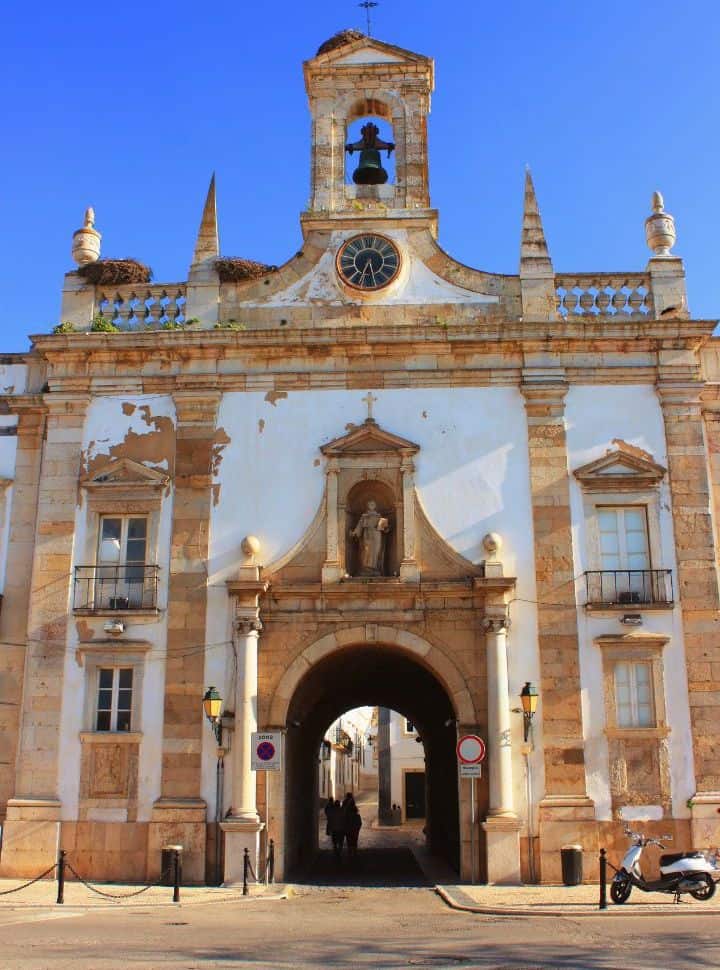
Highlights:
Arco da Vila – beautiful entrance to the old town built in 1812 and part of the reconstruction after the earthquake in 1755.
Sé Catedral de Faro – Presumably built in 1251, this cathedral has undergone many changes that are still evident. Once a basilica, converted to a mosque and then used as a cathedral in the 14th century only to be destroyed by the British in 1596. But since 1755 it hasn’t undergone any changes.
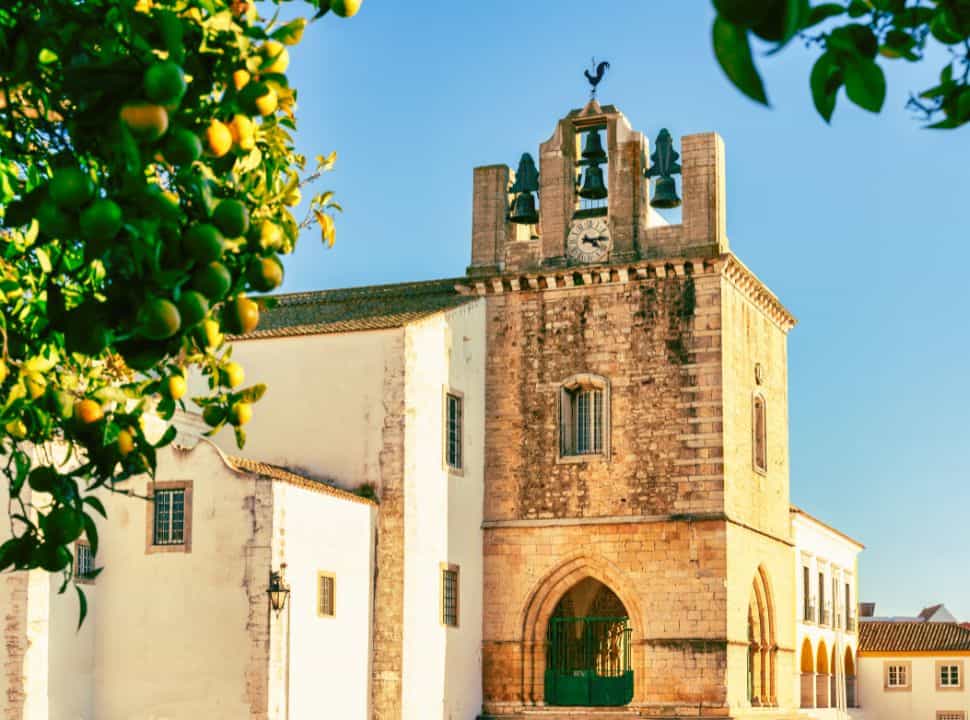
Igreja de Nossa Senhora do Carmo (Church of Our Lady of Mount Carmel)- this spectacular church was reconstructed after the earthquake and paid with Brazilian gold.
Capela dos Ossos (Chapel of Bones) – this unusual church is built from the bones and skulls of thousands of monks as a reminder of infinite life.
Lagos
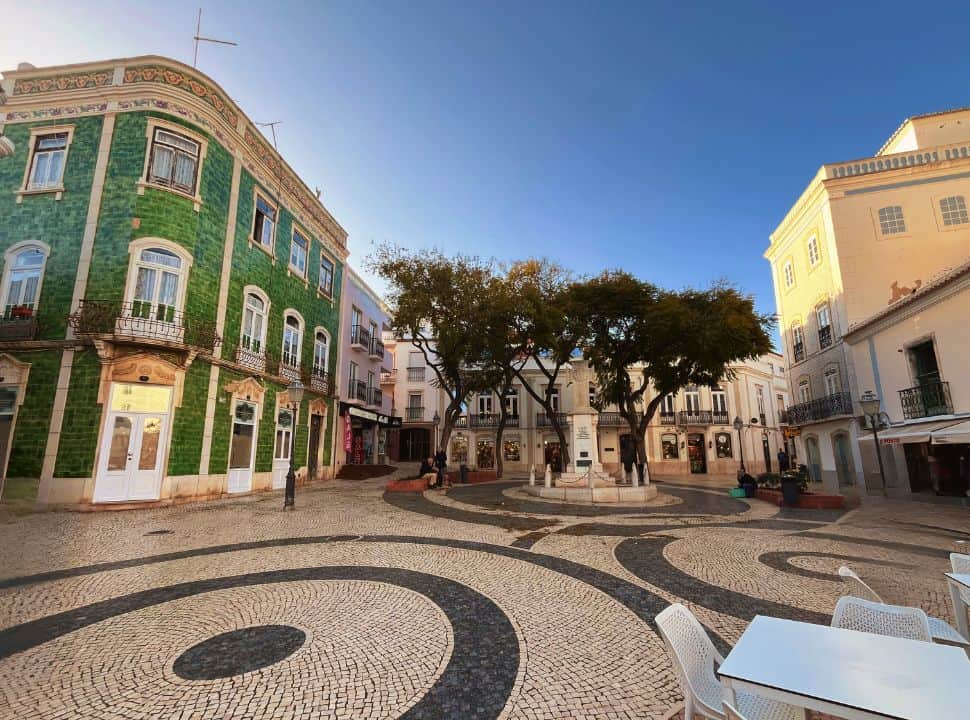
The wonderful thing about Lagos is that you can enjoy the pretty old town with lovely squares surrounded by 16th-century walls but it is also located at walking distance to the most stunning beaches, including Ponta da Piedade.
Lagos Portugal has a large history as a port for the Phoenicians, Greeks, and Moors until King Afonso III claimed it in 1249.
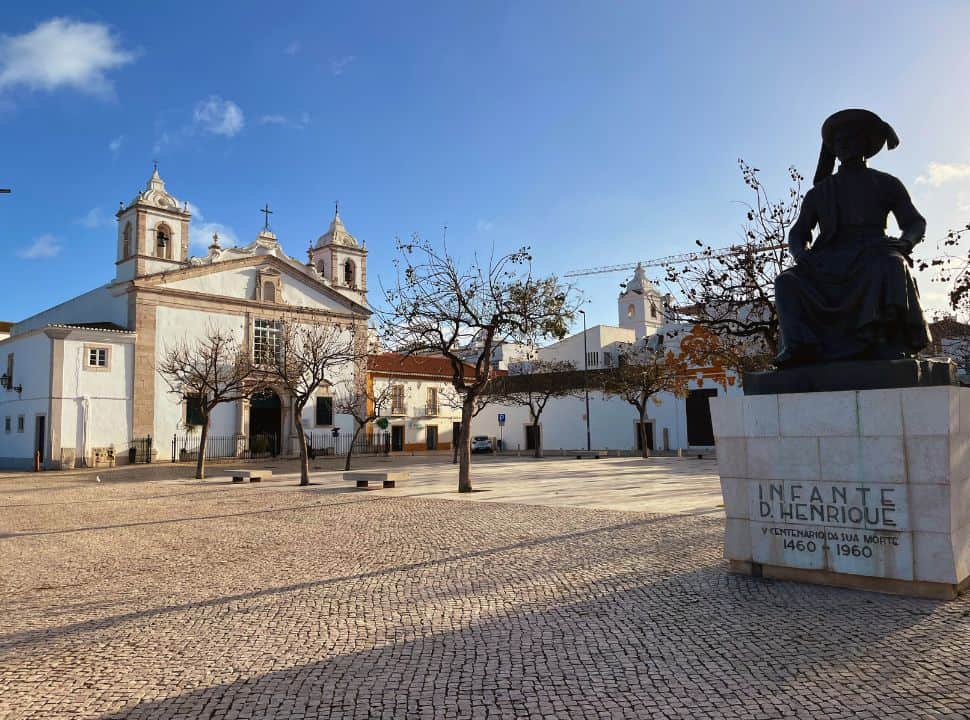
This is also the place where in 1415 Prince Henry the Navigator started the ‘Age of Discovery. During this time Portugal explored West Africa’s Cape Bojador and returned with ivory, gold, and slaves.
The first slave market was in Lagos in 1444, making it a major hub for the slave trade.
Highlights:
Lagos old town – Beautiful plazas and churches connected by little streets, inviting you to stroll around and to get lost.
Mercado Municipal de Lagos (Lagos Municipal Market) – indoor fresh produce market. It is open daily till 2 pm, except for Sundays. Fish is found on the ground floor and local produce is on the second.
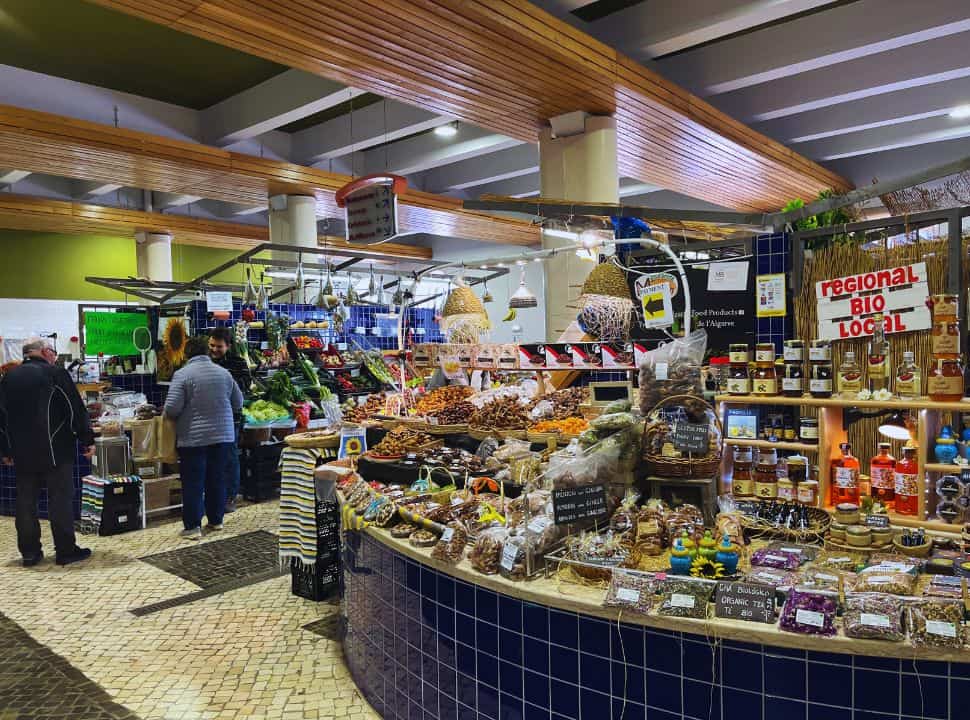
Marina and waterfront – The waterfront is an excellent place to stroll to the marina. You will have a view of Lagos and its city walls, together with the beautiful blue ocean. The best time to go is during sunset.
City walls – The walls surrounding Lagos old town date back to the Roman times and were later reinforced by the Moors and Christians. It particularly protected the people from pirates.
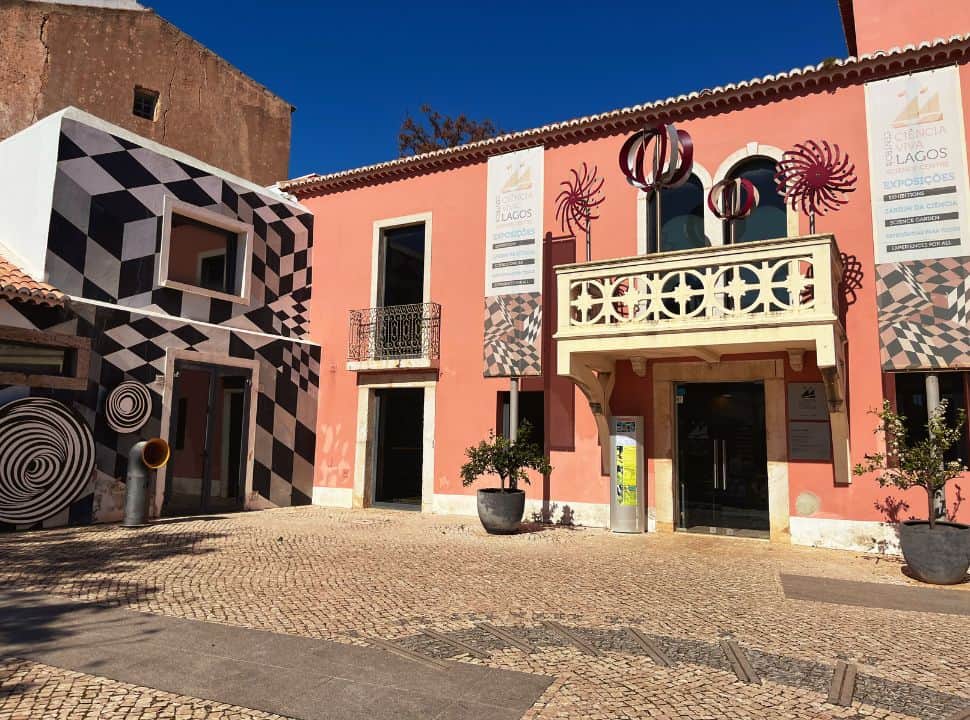
Centro Ciência Viva de Lagos (Science museum in Lagos) is a wonderful museum to spend an afternoon with kids. The main theme at this museum is ‘Discovery and Navigation’. It’s a very interactive museum with robots, drones, and 3D printers.
Mercado de Escravos (Lagos Slave Market) – You will likely walk past it without realizing it as this building is not very prominent. However, it holds a sad history as this is the place where the first slaves were sold. In 1691 the building was rebuilt and used as a custom house.
Lagos Museum – This museum holds everything of Portuguese historical importance: such as Moorish pottery, Roman mosaics, African artifacts, and stone tools dating back centuries.
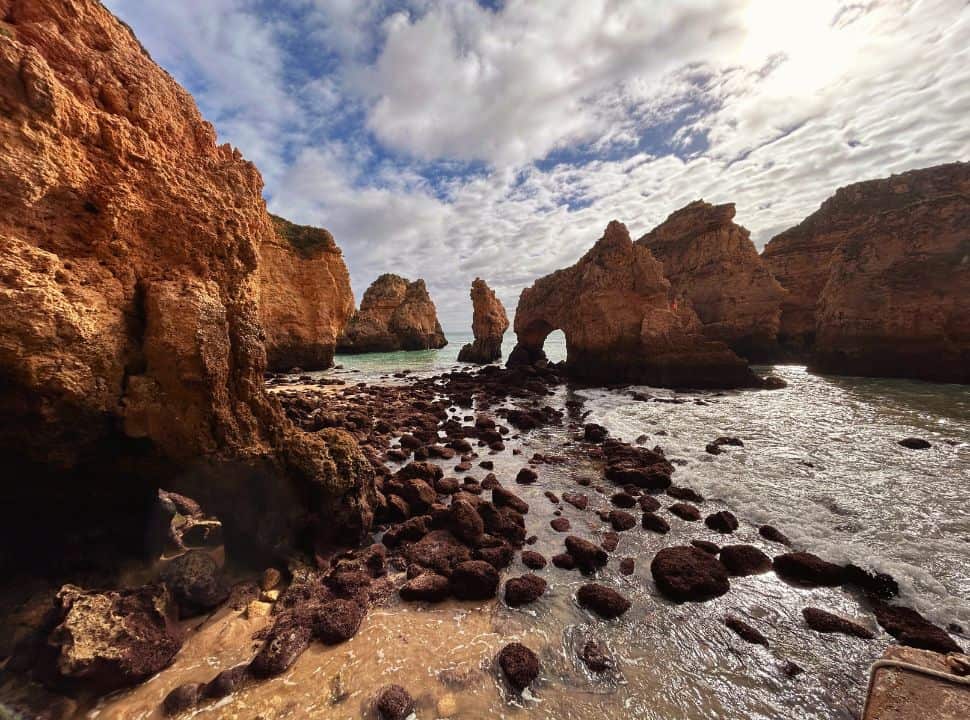
Walk to Ponta da Piedade– A wooden boardwalk will lead you from Lagos town straight to Ponta da Piedade, a group of cliffs and rock towers with water rushing through with every wave. It’s a beautiful spot and one of the highlights of the area.
Tavira
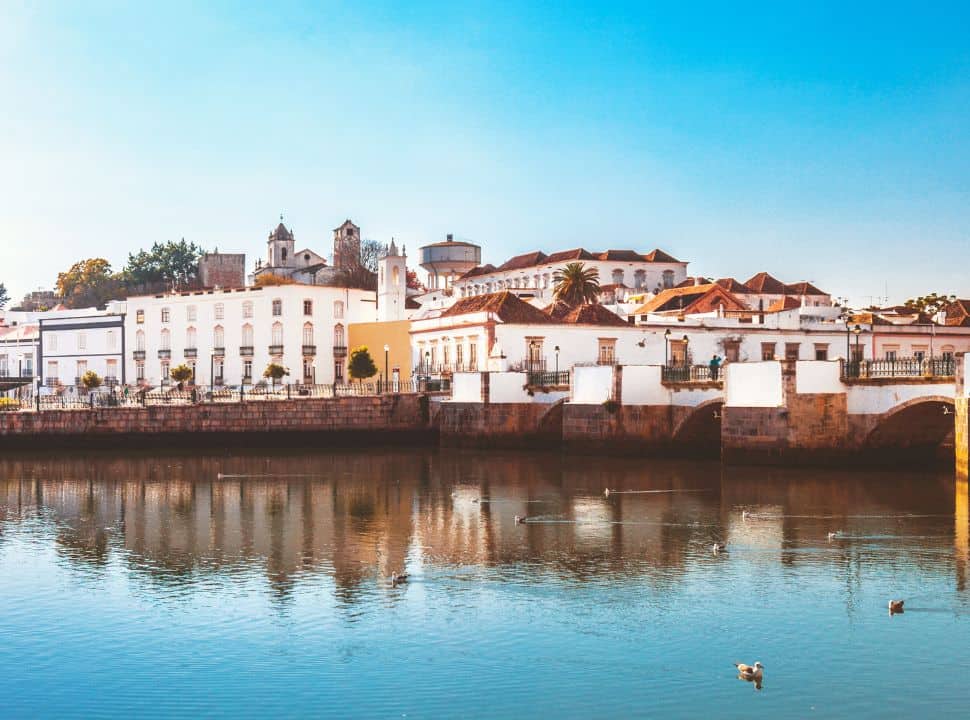
Located just east of Faro, Tavira is considered one of the most charming towns in the Algarve. This town used to be a thriving city. The Moors occupied the city in the 8th century only to have it reconquered by the Portuguese in 1242.
From then on it became an important base during the ‘Age of Discovery’ and maritime trade.
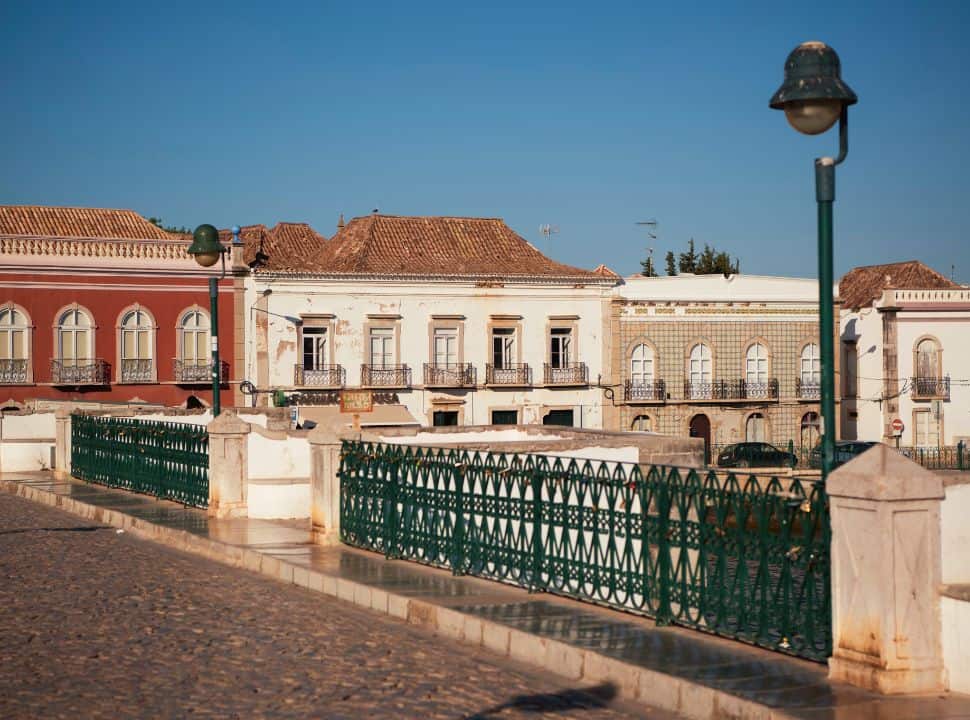
It was even Algarve’s most populated town in 1520 however things went downhill when in the 17th century the North African campaign was seized, the plague struck in 1645, and of course the earthquake in 1755.
Today Tavira is a popular tourist town and known for tuna fishing.
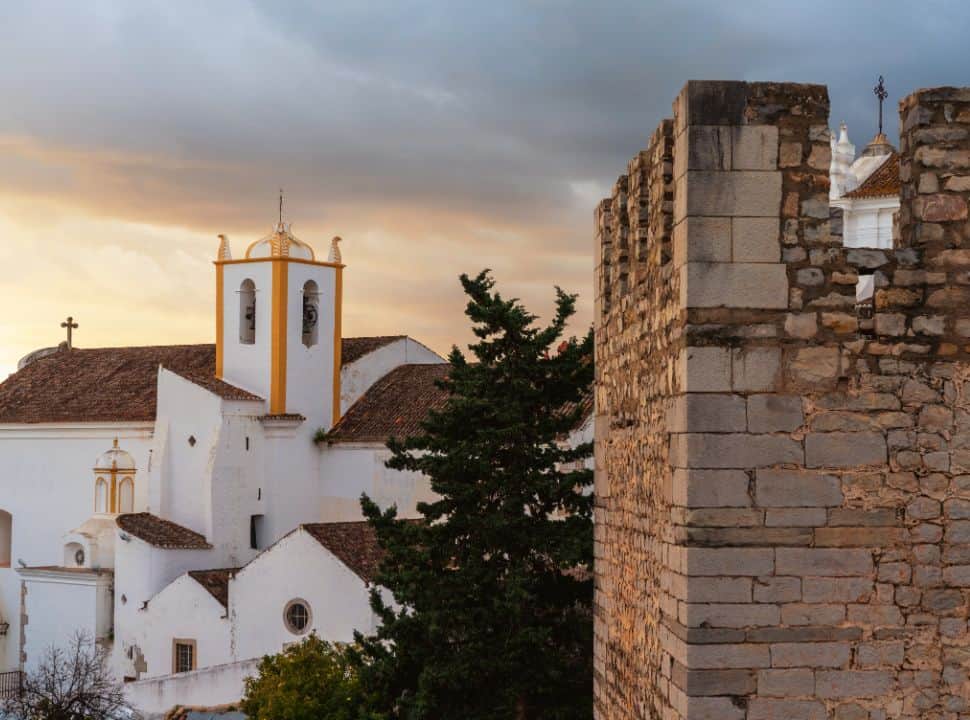
Highlights:
Old Town – wander through the little streets surrounded by tiled houses and well-preserved Moorish architecture
Tavira Castle and City Walls (Castelo, Murales de Tavira) – The beginning of the walls dates back well to the 12th century when the Moors started building it. It enclosed the entire town well into the 16th century.
Riverfront walk along Gilão River – This river runs through Tavira. It will lead you to the most important highlights of the town, including the old bridge. This bridge is also often referred to as the Roman bridge, despite being rebuilt in 1655
Silves
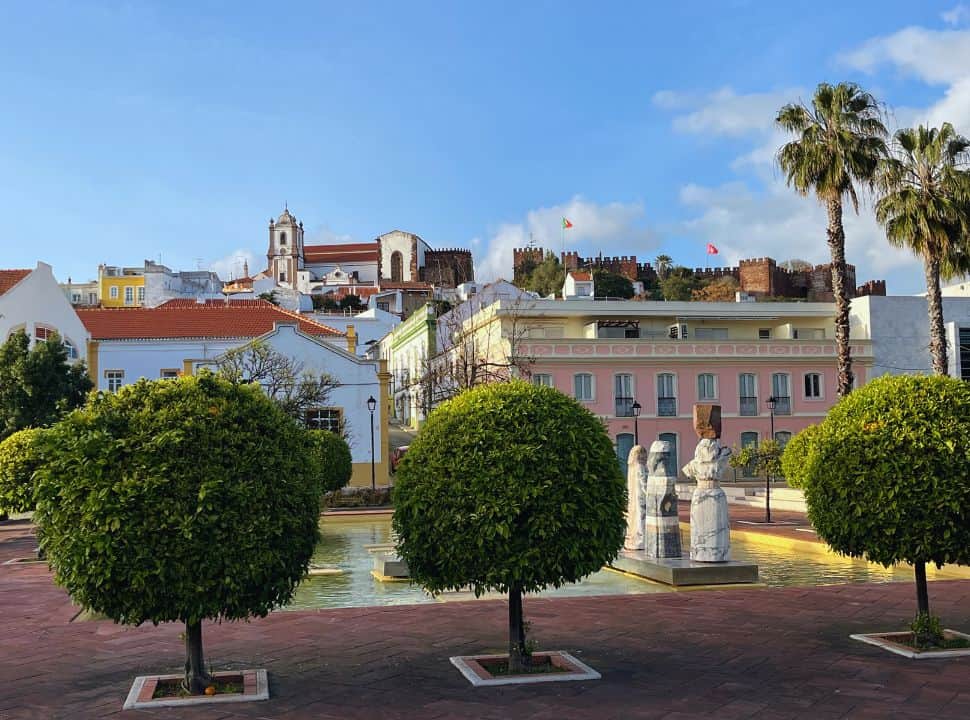
Silves is tucked away in the hills and has one of the Algarve’s best-preserved castles. The Moors used this town as a strategic location from the 8th century till 1189. During that time it prospered, but when it was sieged it was plundered and wrecked by English crusaders supported by the Dom Sancho I.
In 1249 the Christians gained control of Silves, but by that time it had lost its grandeur. The river was silted, and the ports of the Algarve became the main focus. Additionally, a lot was destroyed by the 1755 earthquake.
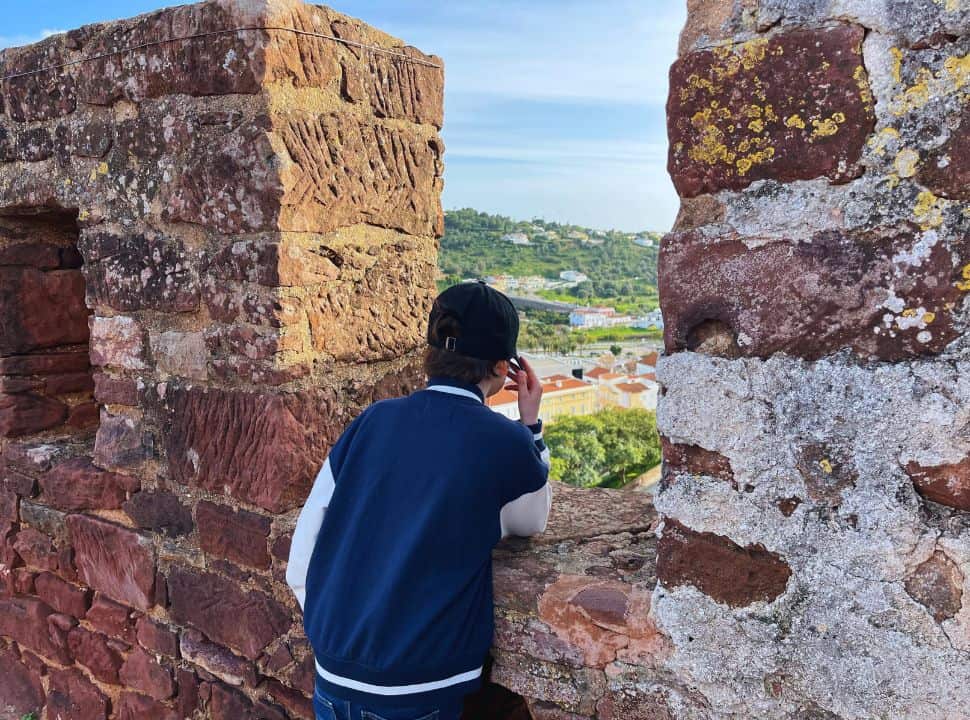
Today it’s a cute town to walk around. The red castle gives you an idea of the historical events and provides stunning views of the beautiful surroundings.
Monchique
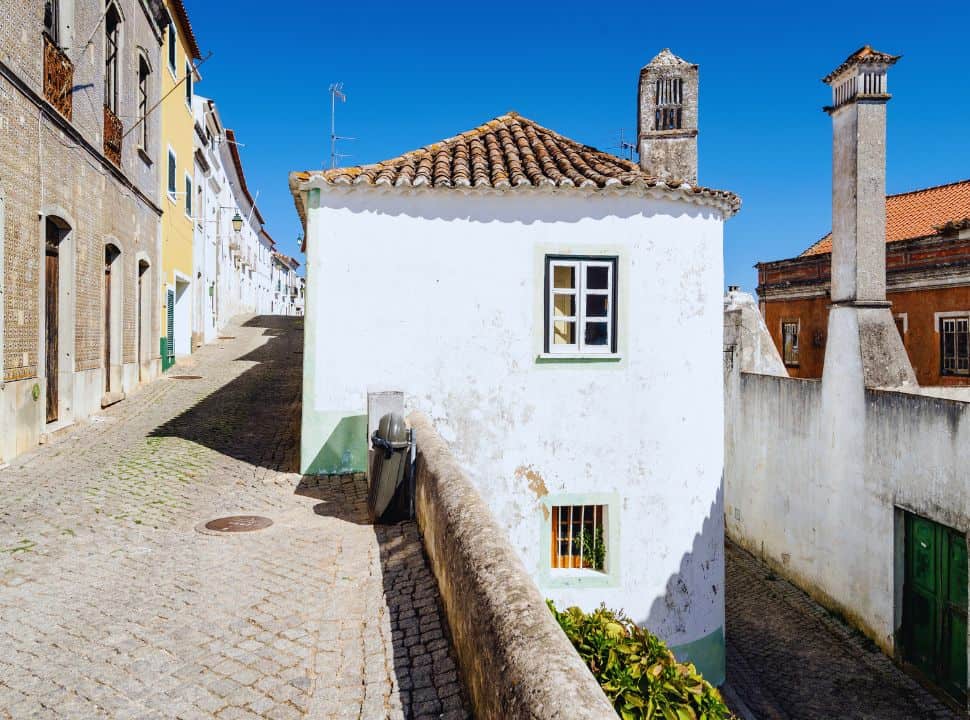
Monchique is known as a spa destination, even in the Roman period. Today it still has several spa resorts and is a great place to visit in the winter months.
If you are not into spas then Monchique can still be included in a road trip for its beautiful mountaintop surroundings and views.
Carvoeiro
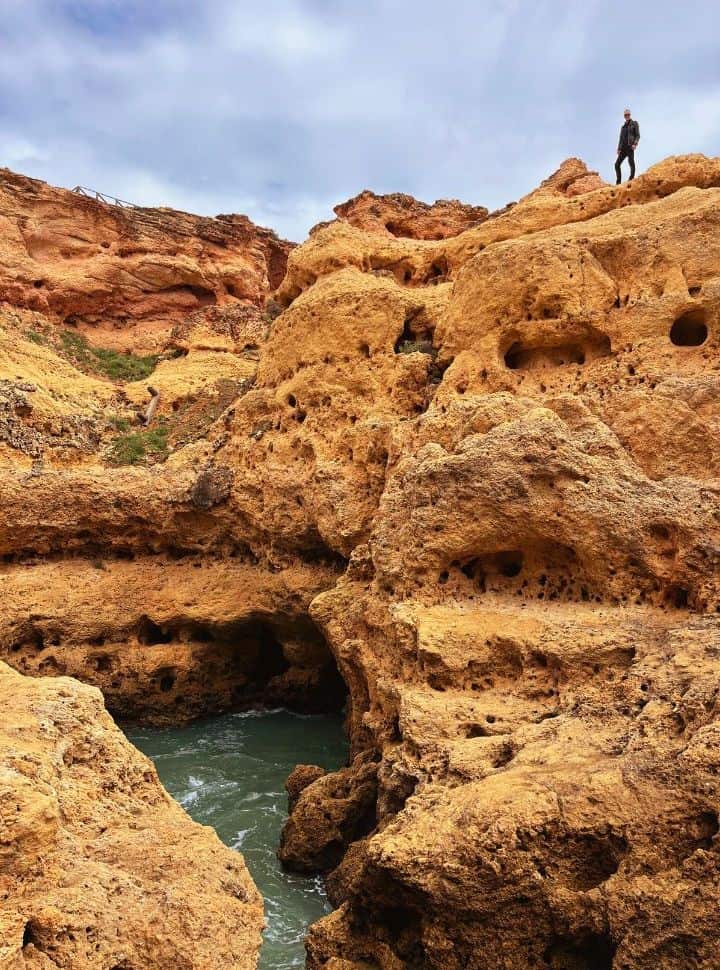
The little town of Carvoeiro has become an all-year-round destination. Its pretty beach is the main attraction together with the Algar Seco.
The Algar Seco is just a short walk away from town. The wooden boardwalk takes you straight to the dramatic limestone cliffs, rough rock formations, and caves.
If you don’t feel like walking, then it’s a short drive from town. In the winter you will find enough parking space at Algar Seco.
Tours to the Benagil Caves leave from Carvoeiro too.
For more information on Carvoeiro check out our things to do in Cavoeiro post where we go more into detail about its nearby beaches, attractions and accommodation.
Sagres
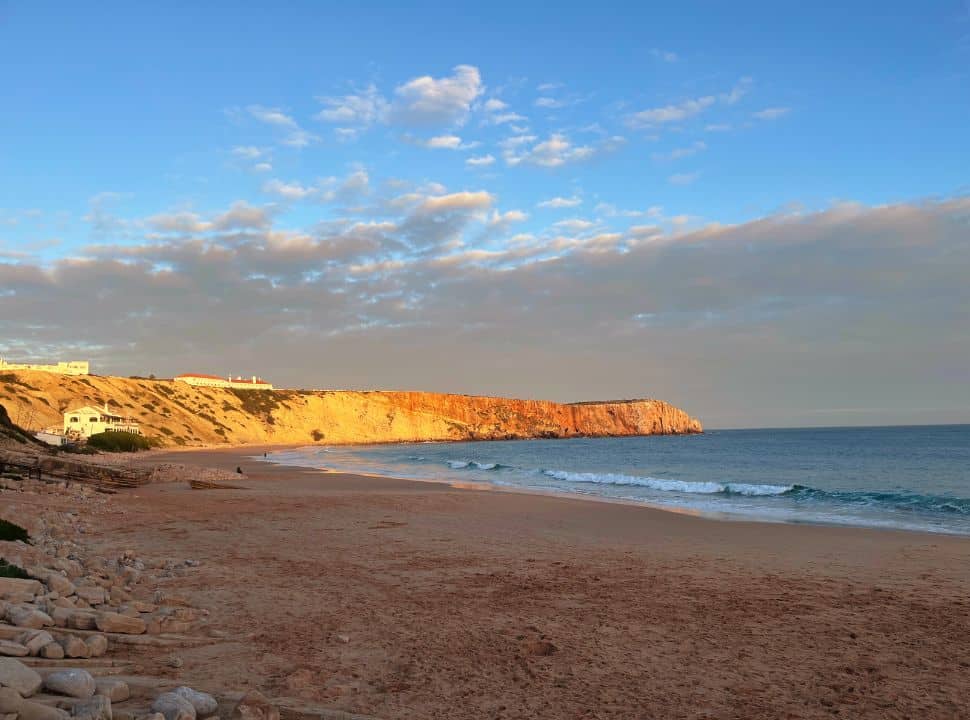
Sagres is located at the western tip of the Algarve and became an important hub when Prince Henry started his navigation school here in 1434.
It is a nice place to combine with a visit to Cabo de San Vicente Light Tower. Or the place to be if you are a surfer.
Sagres is known as the surfers’ town of the South Portugal. There are a lot of cute places to eat. However, it isn’t as charming as the other towns we had visited.
Where to stay in the Algarve in winter?
Initially, we wanted to stay at different locations in the Algarve. However, we soon discovered that many accommodations were closed in winter. Those that were open were usually bigger resorts instead of the small places we usually stay at.
In the end, we decided to stay in Lagos for our entire stay. It is ideally located to go on day trips to the west and southern beaches and into the mountains.
I recommend staying in Lagos and Faro when traveling in the Algarve for 5 days or more. Read more on best places to stay and tips for finding your best accommodation in the Algarve.
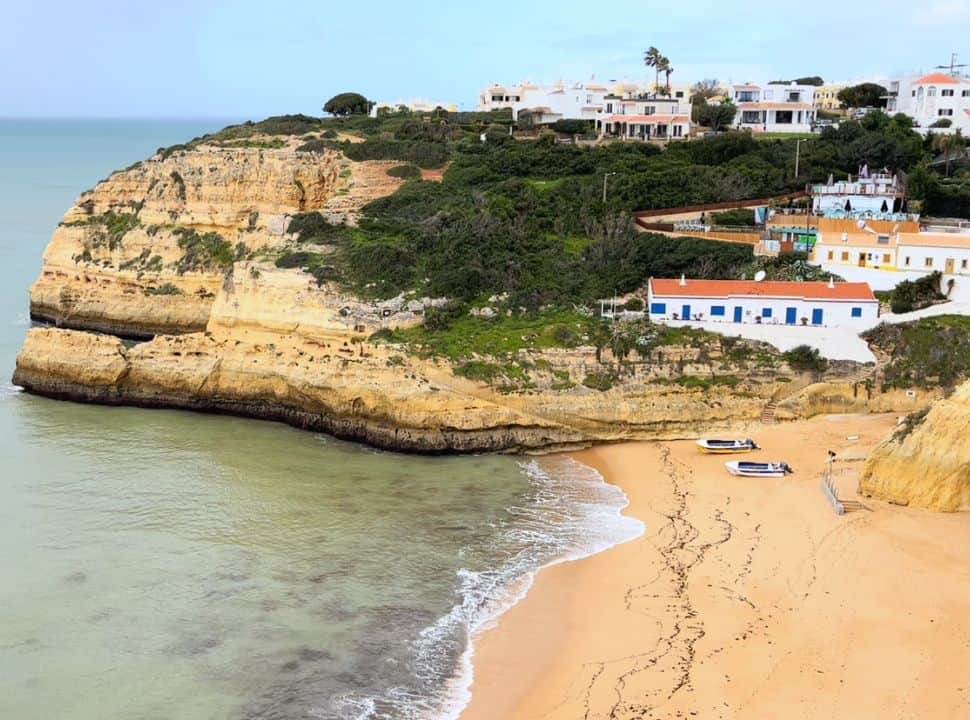
The prices of accommodation in the Algarve are much lower than in the higher season. Good deals do allow you to stay somewhere more luxurious than usual. There are a couple of places that offer indoor pools and spa facilities. Ideal for the winter months.
There are guesthouses as well, with shared bathrooms. Perfect if you want to keep accommodation costs low.
Houses in the Algarve are built to keep the heat out during the warm summer days. They are not well isolated to stay warm in the winter months. So it’s a good idea to bring warm clothes and check for a blanket.
Recommended accommodation in Lagos winter time:
Carvi Beach Hotel $$ – it’s a massive hotel and we would not recommend staying here in the summer when it gets crowded. During the winter it is quiet and has the best location to explore the famous beaches such as Praia Dona Ana, and Praia do Camilio, and the hike to Ponta Da Piedada. It’s just 15 minutes walk from the town center.
Lalitana Townhouse $$ – The guesthouse is a colorful place located in the heart of Lagos Old Town. It has city and inner courtyard views and is just 600 meters from the beach.
Casa da Flor Apartment $$ – The apartment with a balcony and quiet street views has 2 bedrooms. It’s beautifully located within walking distance of the old town and the nearby beaches.
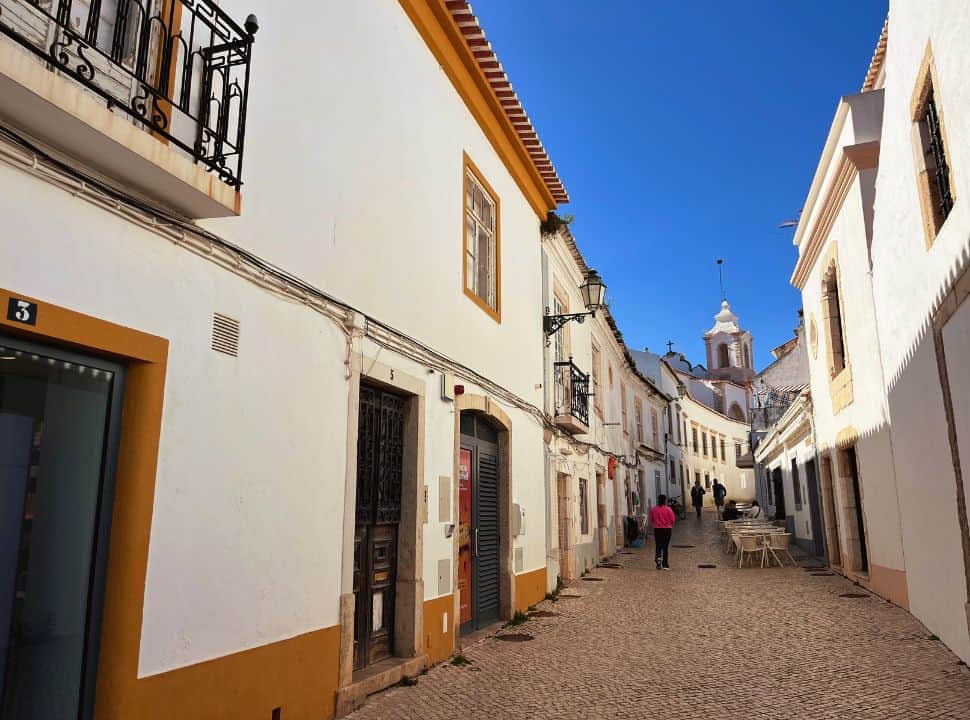
Recommended accommodation in Faro winter time:
Faro Downtown Studios $$ – this studio apartment with a nice terrace has all the amenities you will need for a comfortable stay in Faro. It is ideal to stay with kids.
A Casa do Tenente $$ – Located in the historical part of Faro. Close to the shops, restaurants and station. The shared kitchen and courtyard are available for use.
Mezzanine 4 Faro $$ – beautifully decorated apartment. It’s pretty big, ideal for families or two couples. Perfectly located to explore Faro city.
Getting Around the Algarve in Winter
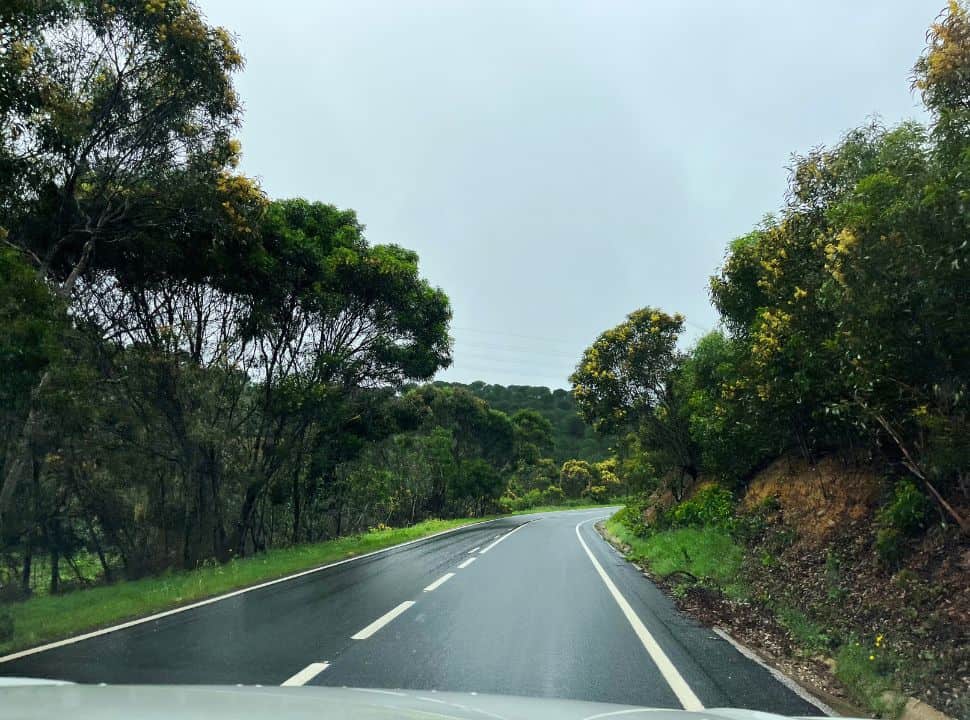
We highly recommend renting a car when visiting the Algarve in winter. It’s the best way to explore the whole region, no matter the weather conditions.
The roads throughout the Algarve are really good, even the little dirt roads along the west coast. The best part is that there is hardly any traffic and easy parking, even in the popular tourist villages.
We particularly loved taking the little roads, avoiding the toll road.
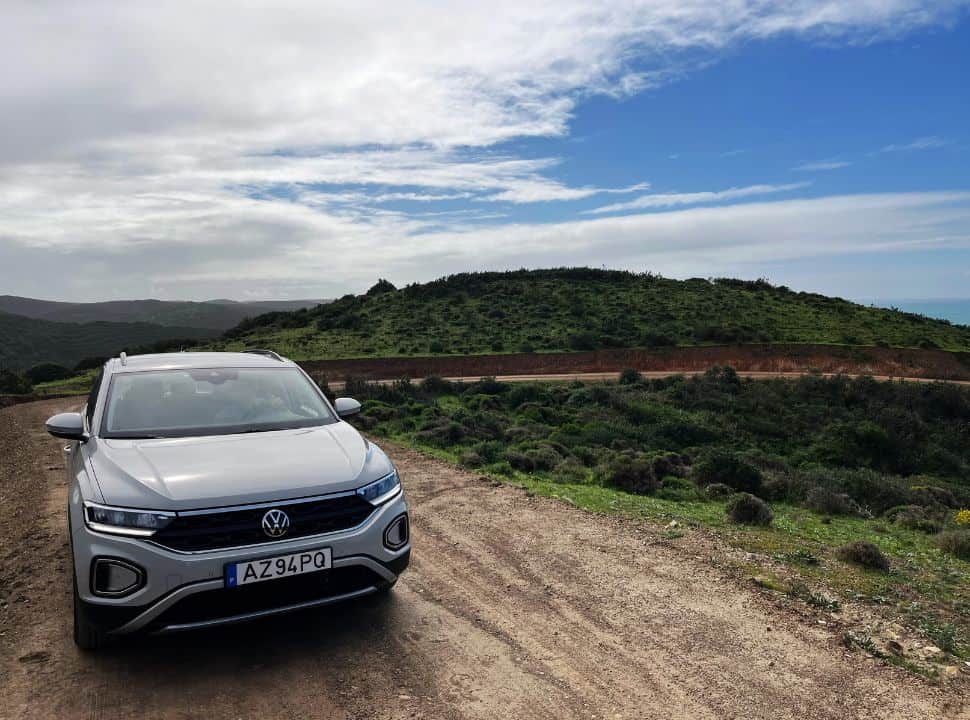
Public transport is an easy way to travel cheaply between the bigger towns. For just 8 euros you can hop on a bus from Lagos to Faro with FLIXbus or Alsa.
A regional train runs between Lagos and beyond Faro. Popular stops are Portimao Ferragudo, Silves, Albufeira, Loule, Faro, and Tavira.
Frequently Asked Questions
Does the Algarve shut down in the winter?
The Algarve does not shut down entirely despite the fewer tourists visiting. Accommodation, restaurants, and shops at tourist destinations are open. Tours even continue to operate. This makes the Algarve an excellent all-year-round destination.
What is the weather like in the Algarve in winter?
The Algarve Portugal is blessed with mild winter with pleasant temperatures reaching 10°C to 16°C. The winter months have the most rainfall. But don’t let this stop you from going. It doesn’t rain the entire day.
Is the Algarve worth visiting during winter?
Algarve is an excellent destination for the winter months with milder weather, lower prices, and fewer people. You can explore the region’s beauty without the summer hustle. A unique experience to enjoy
What are some popular outdoor activities to enjoy in the Algarve during winter?
In the Algarve’s winter, you can engage in activities like hiking along coastal trails, birdwatching at Ria Formosa Natural Park, or exploring historical sites with pleasant weather conditions.
Wrap Up: Algarve in Winter
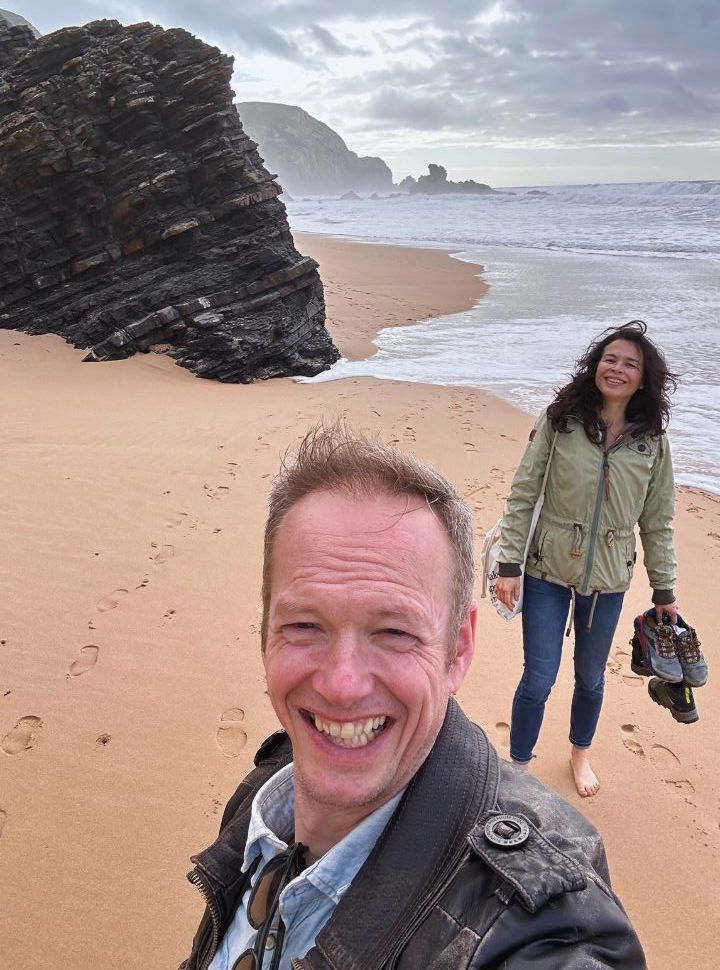
Algarve was a wonderful medicine for our winter gloom. We loved its nature, the deserted beaches, and the sun on our faces. Of course, it wasn’t always blue skies but it was great to be outside and to explore the fascinating cities and coastline.
This part of Portugal is so diverse and we can imagine returning to see more. Algarve is a great winter escape when living or traveling in Europe.
Pin It For Future Reference

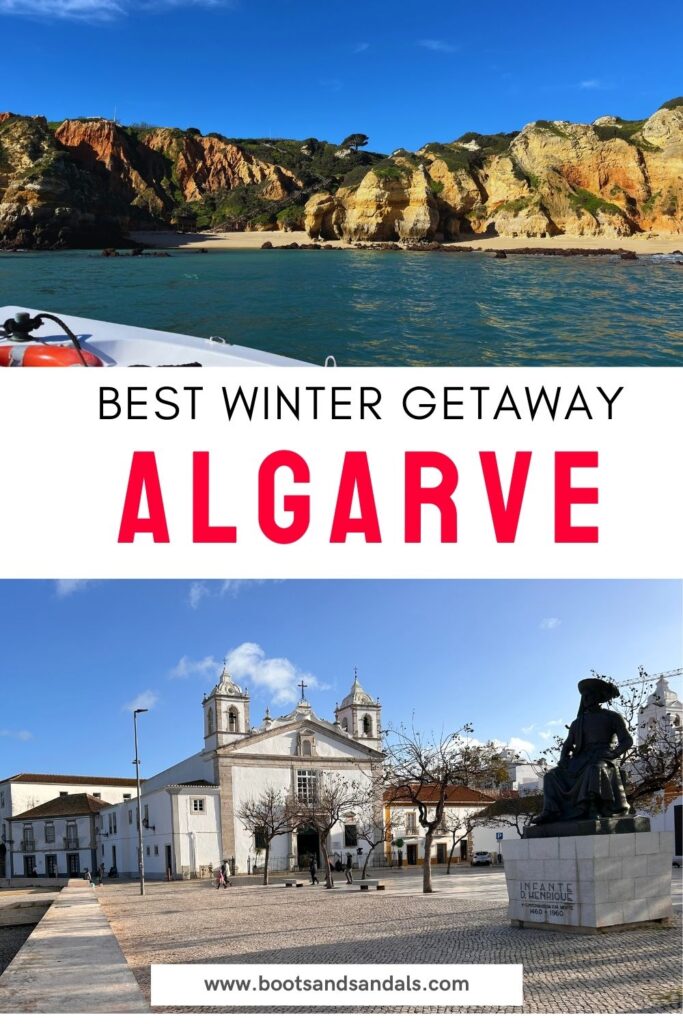
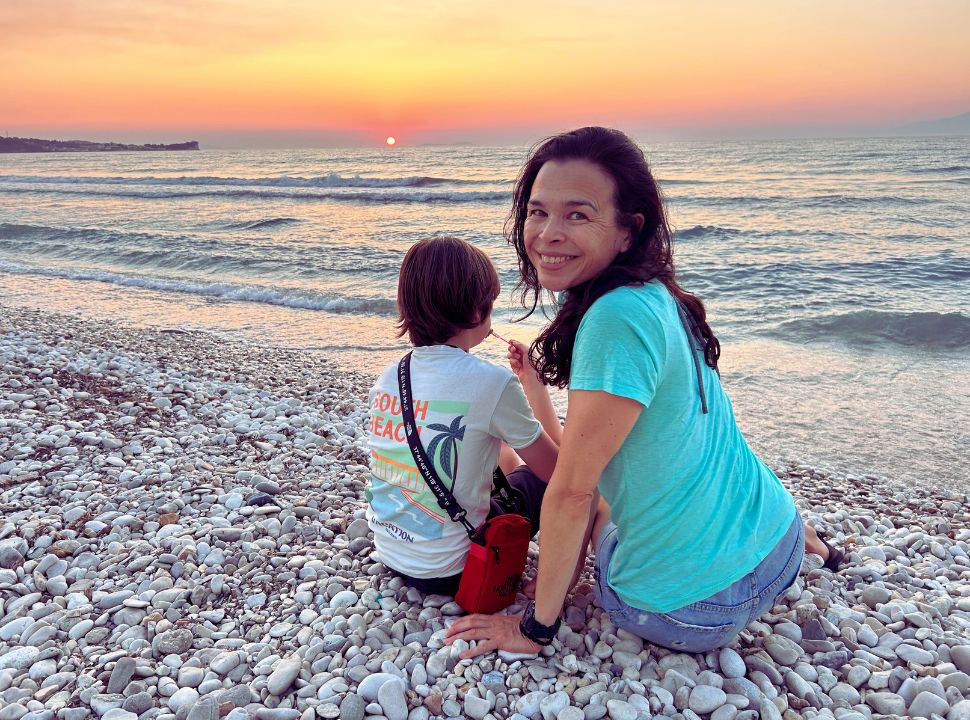
Monico was born in Kuwait and grew up in Indonesia, Malaysia, and Australia, which gave her a unique perspective on the world from a young age. Her first solo travel experience took her to Indonesia, where she volunteered at an orangutan rehabilitation center, and since then, she has focused her travels on environmental and conservation projects in places like Panama and Australia. Along with her love for wildlife, Monico enjoys exploring historic European cities, swimming in the sea, and tasting street food in Asia.
